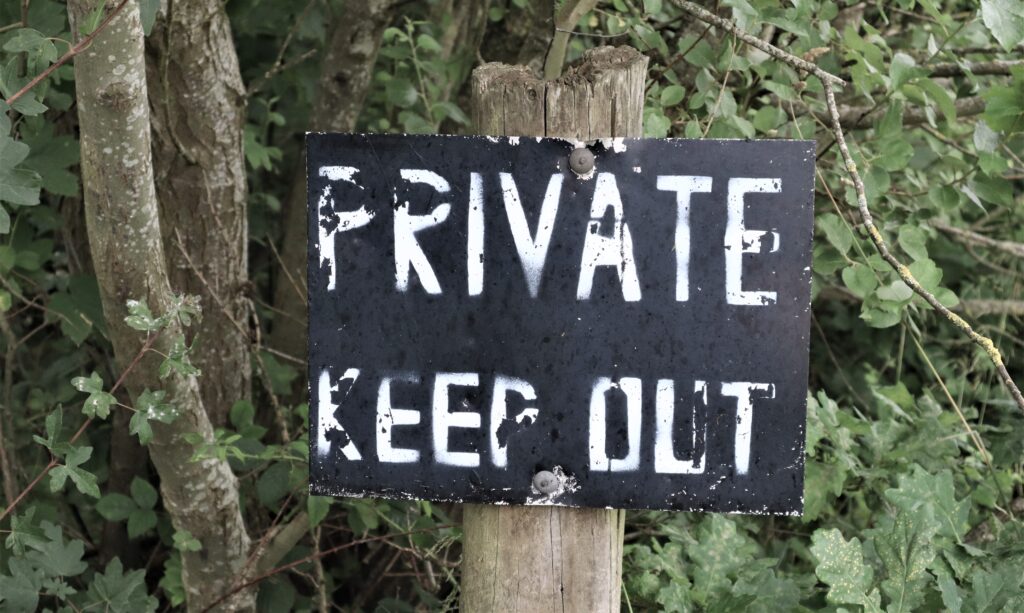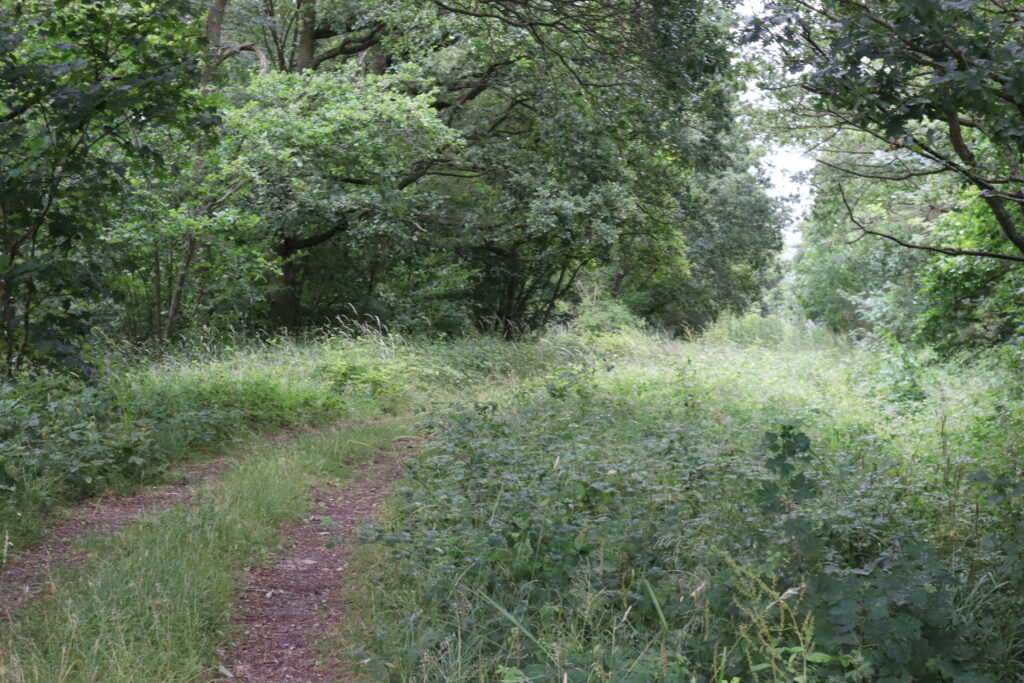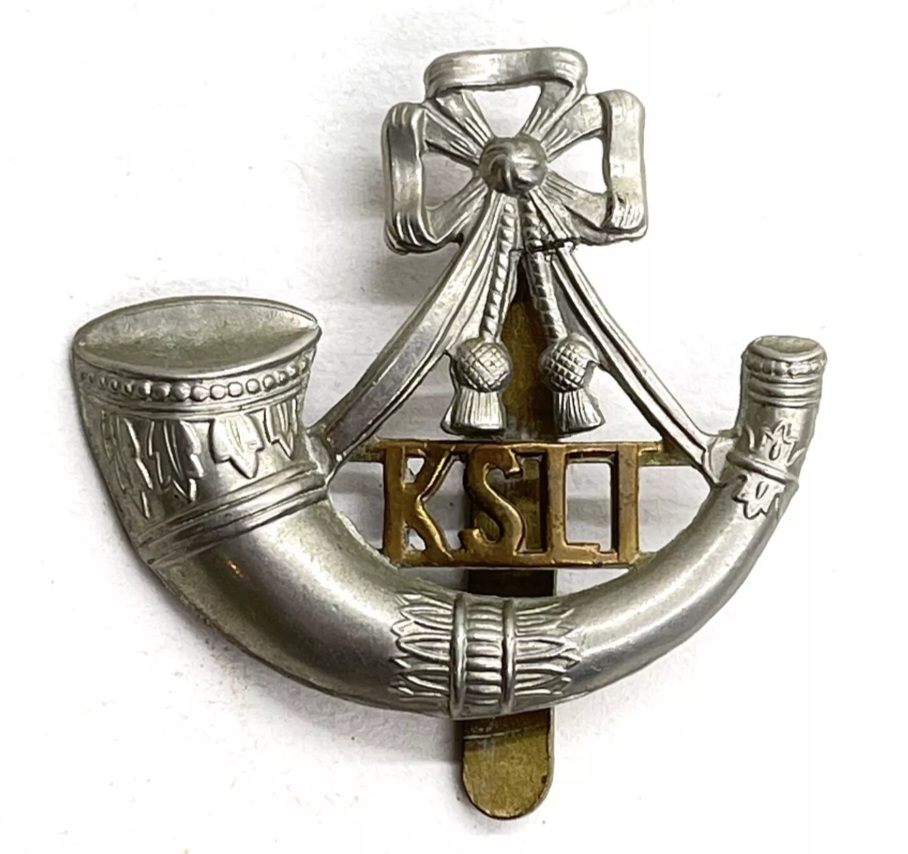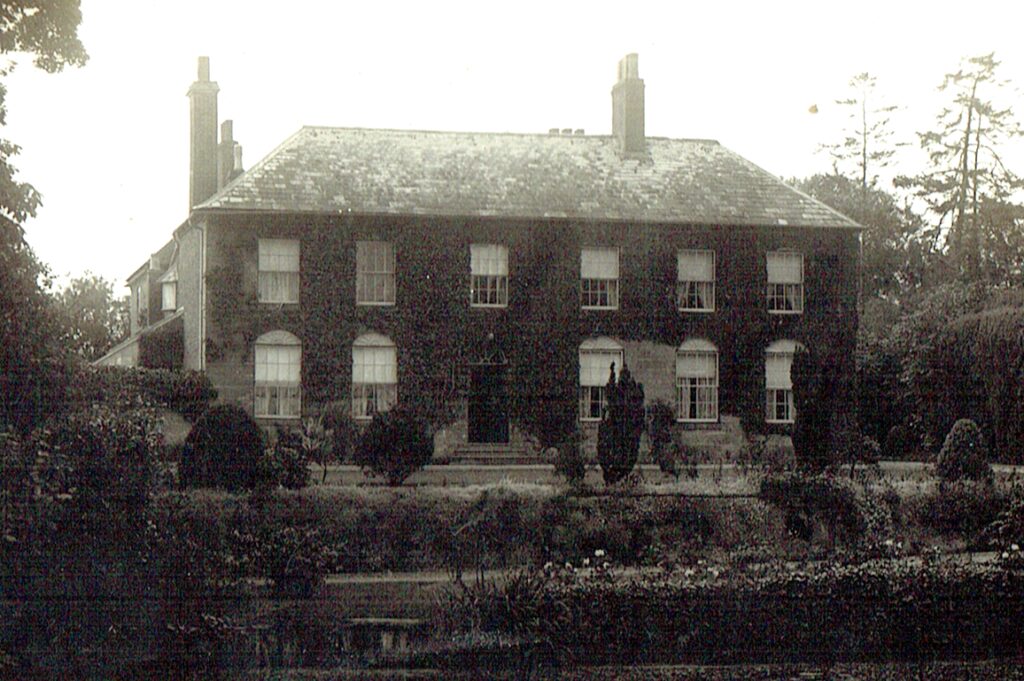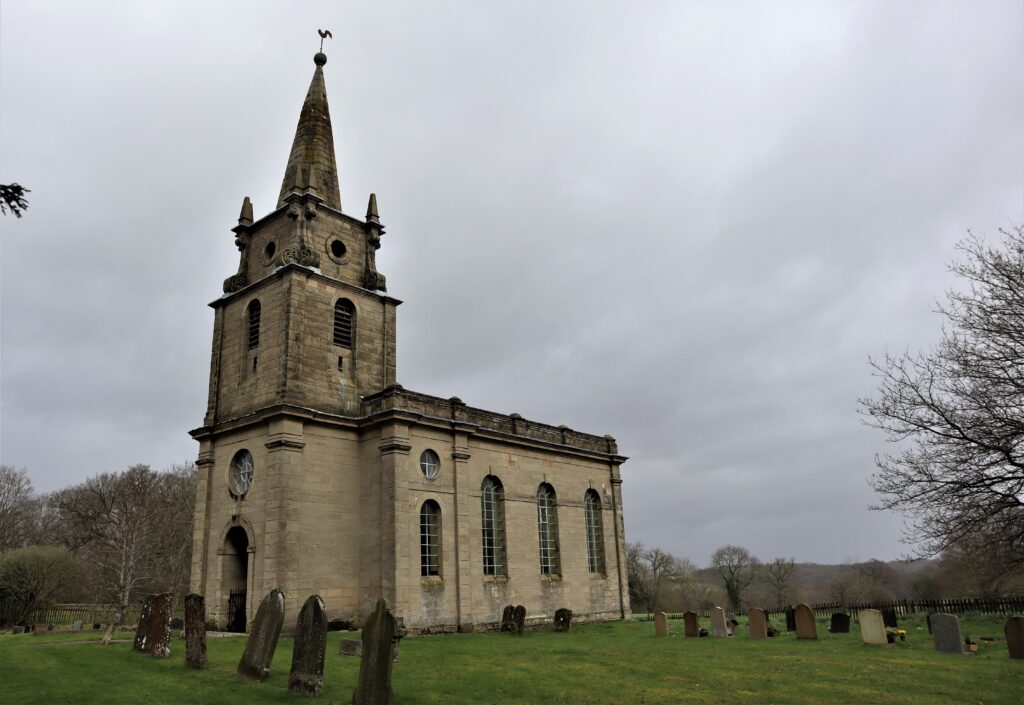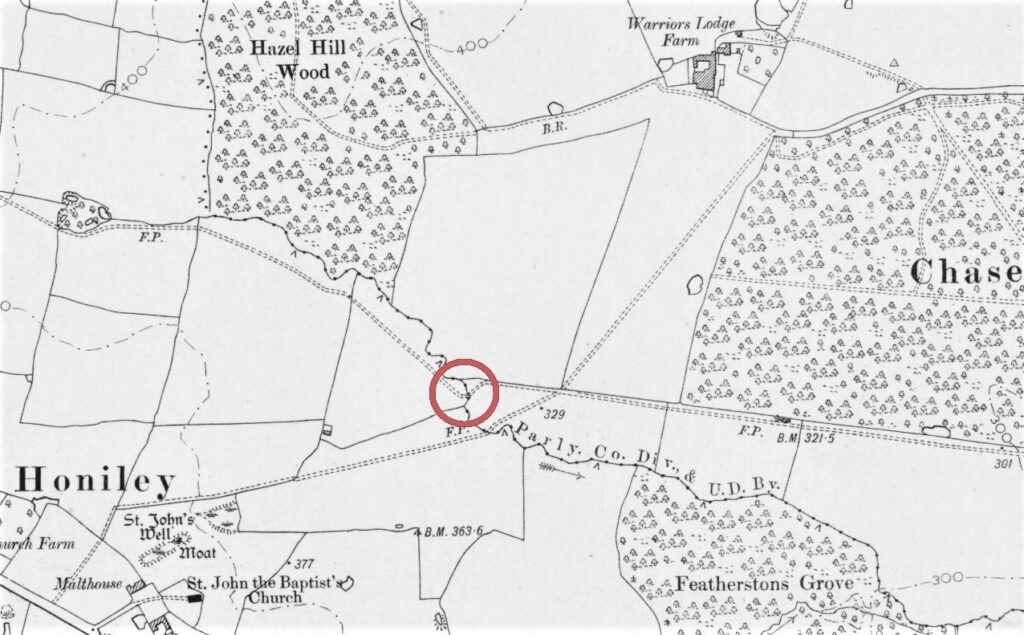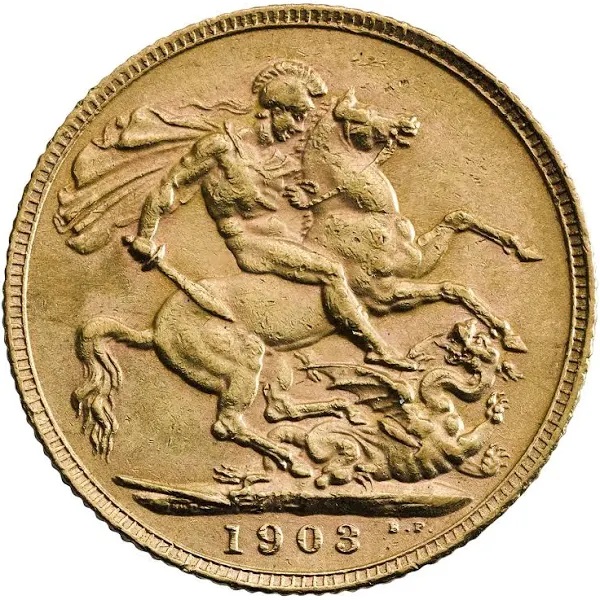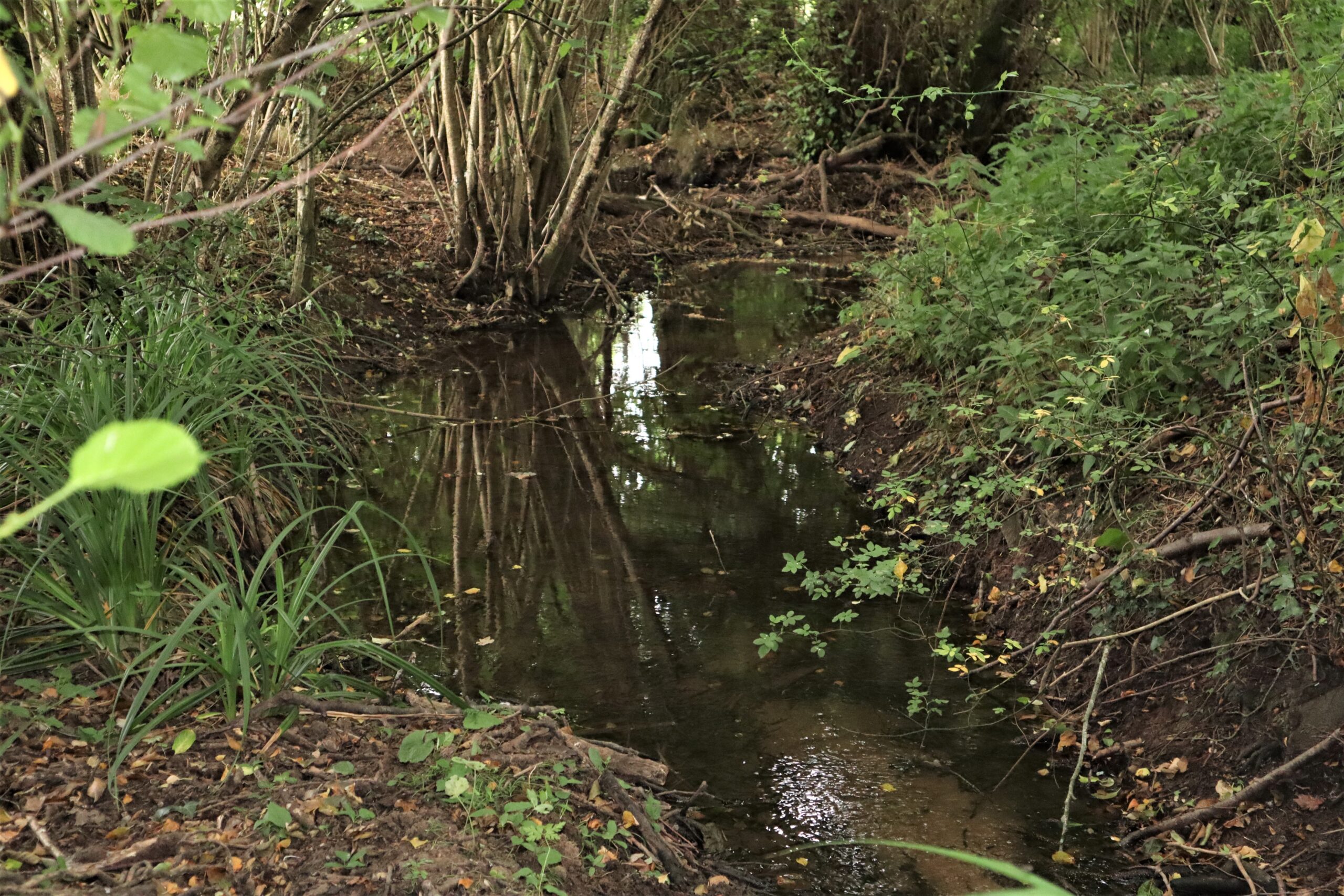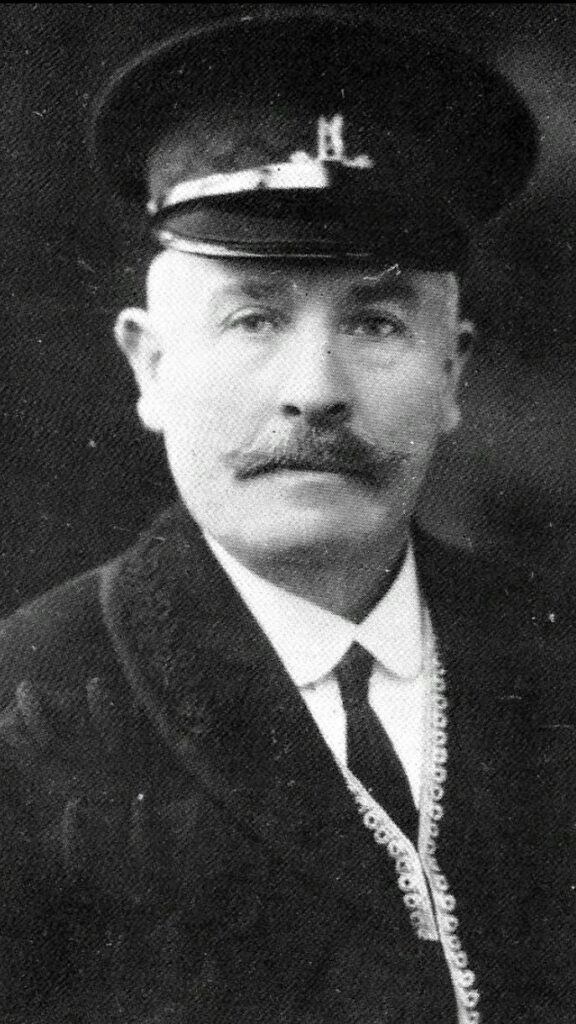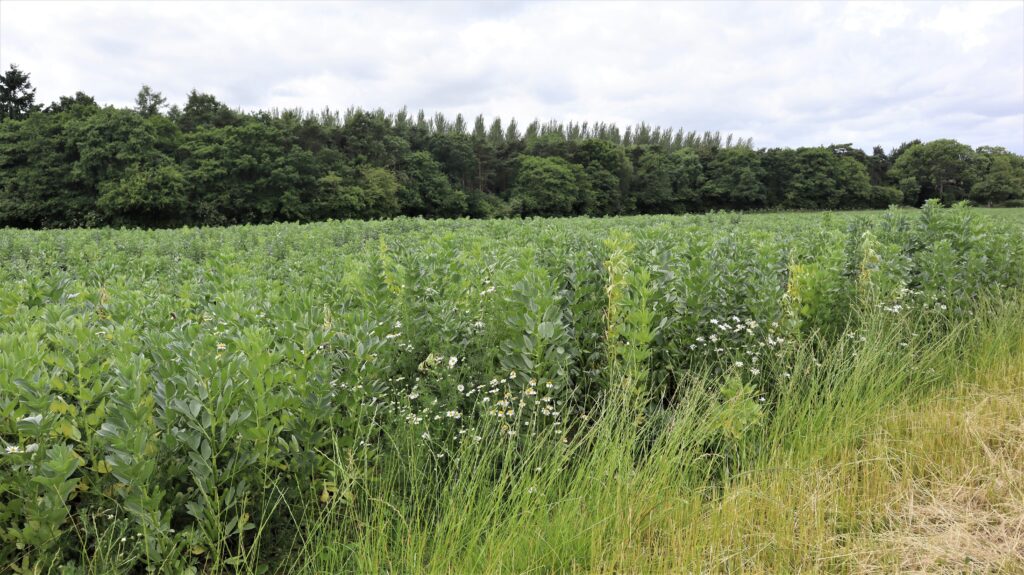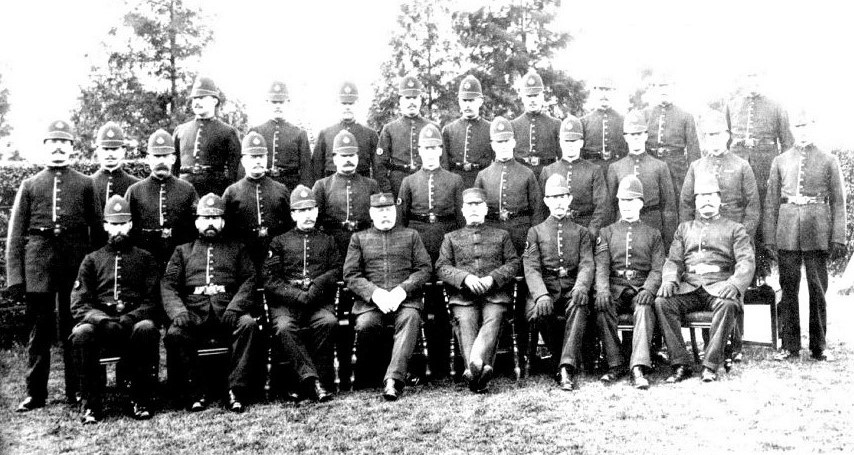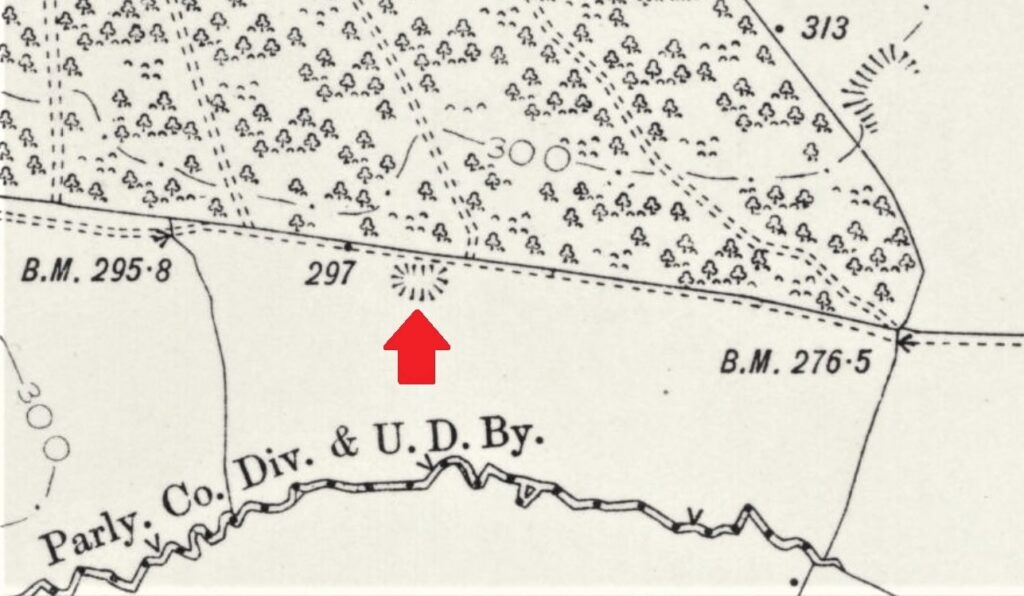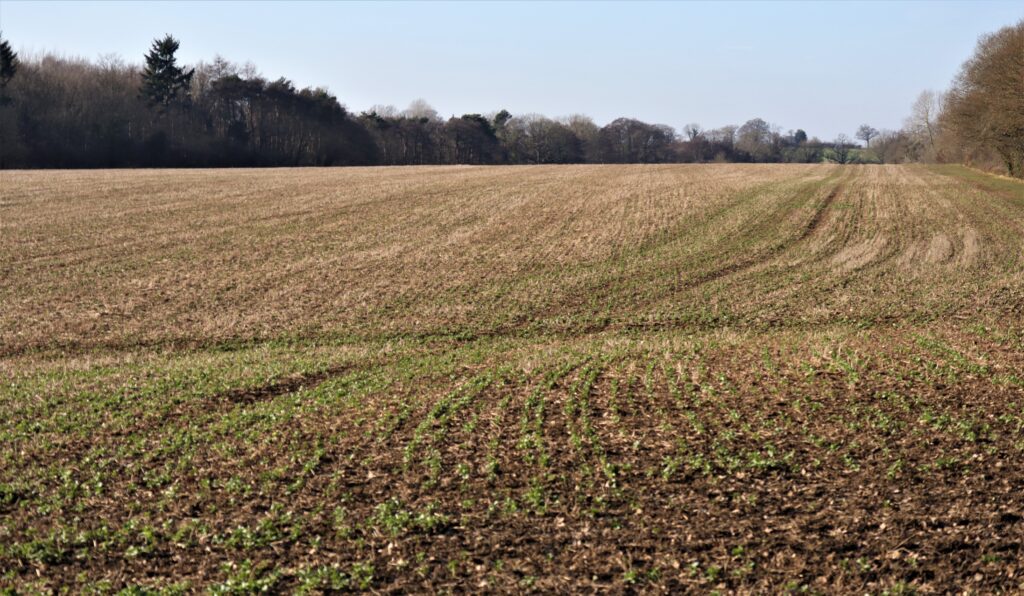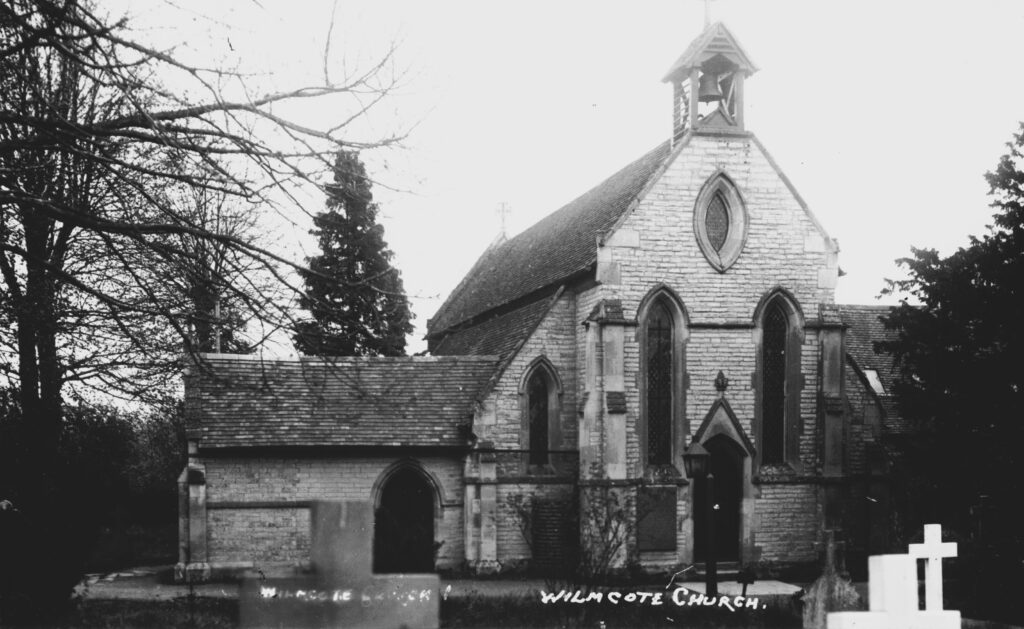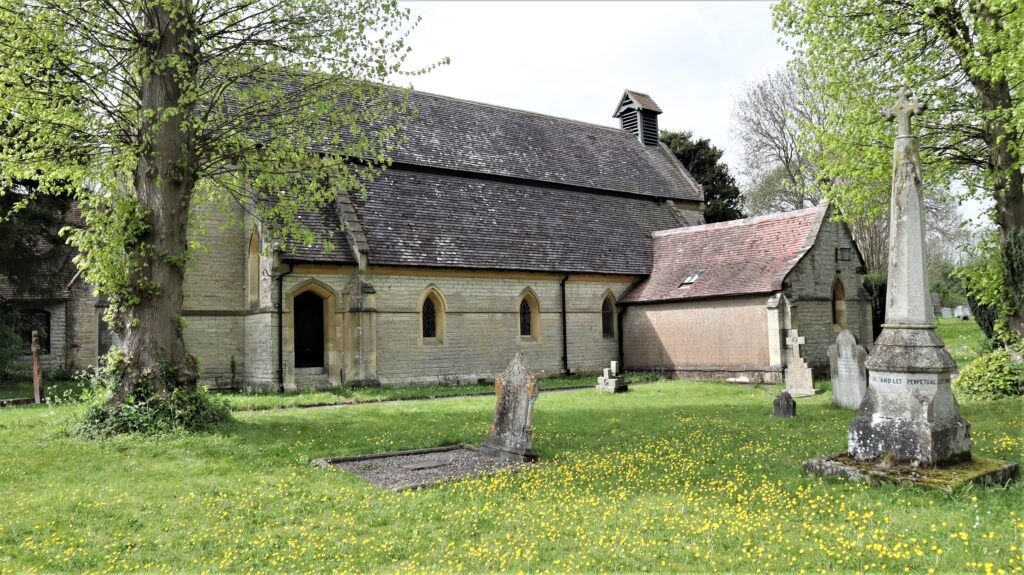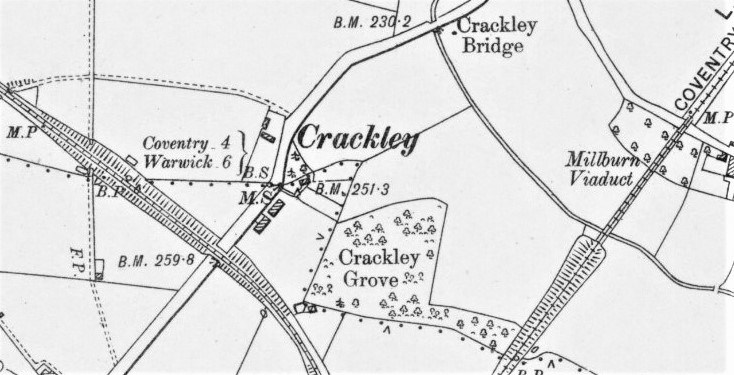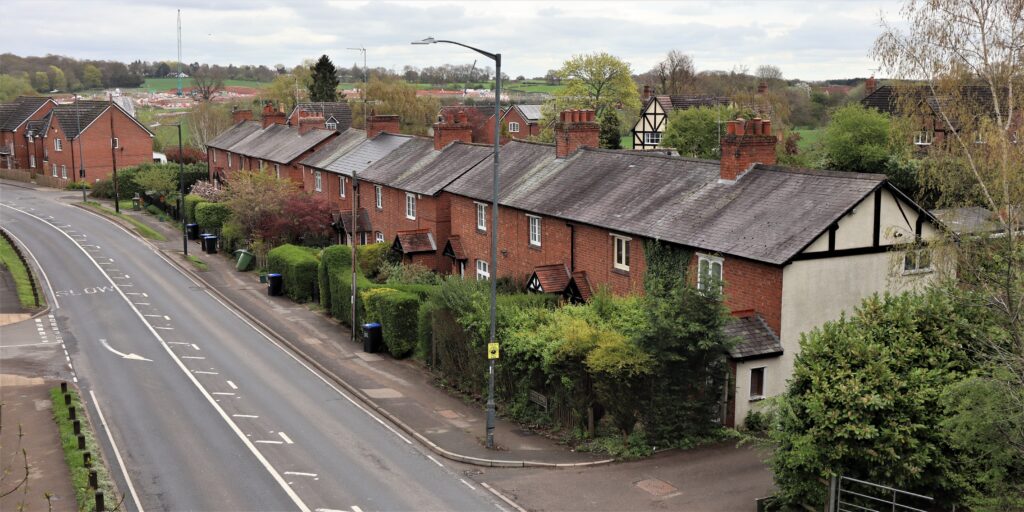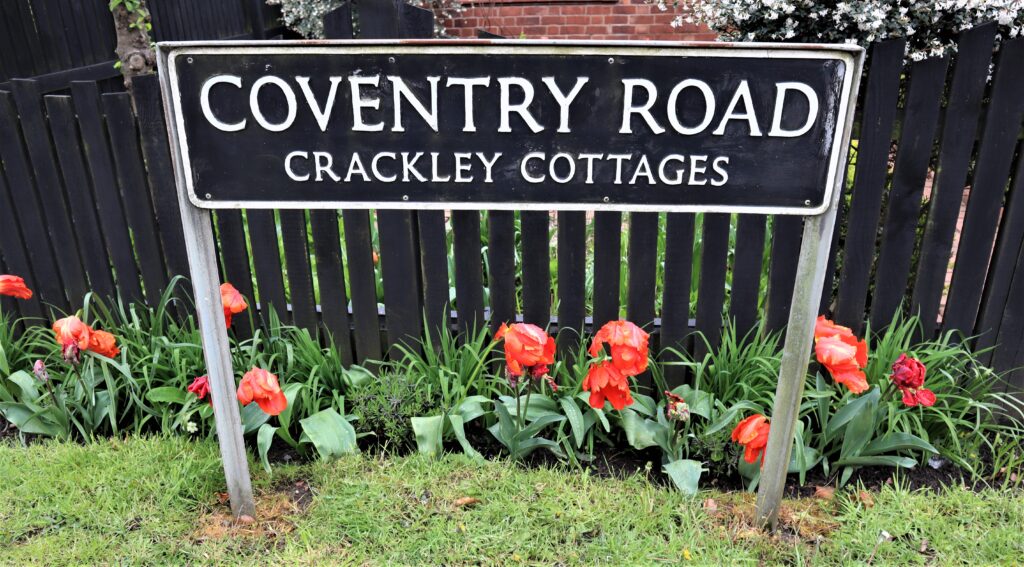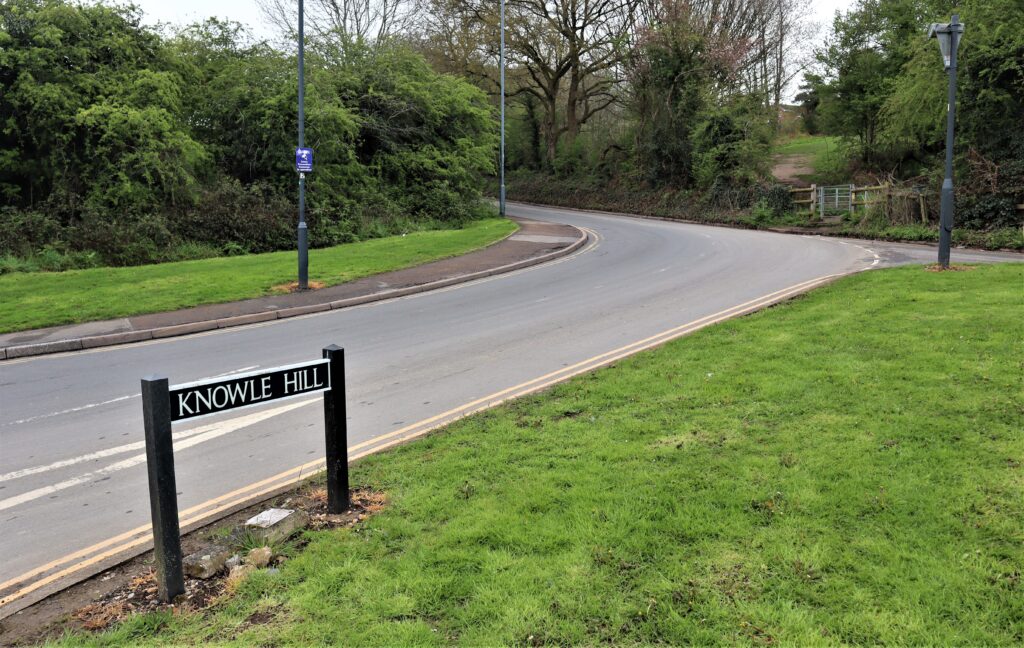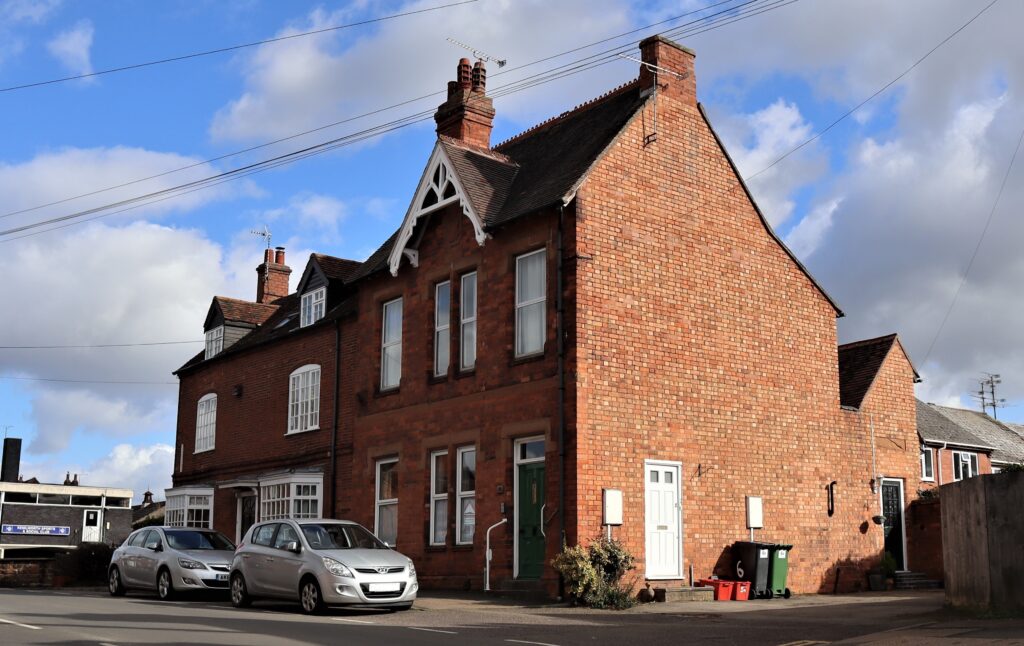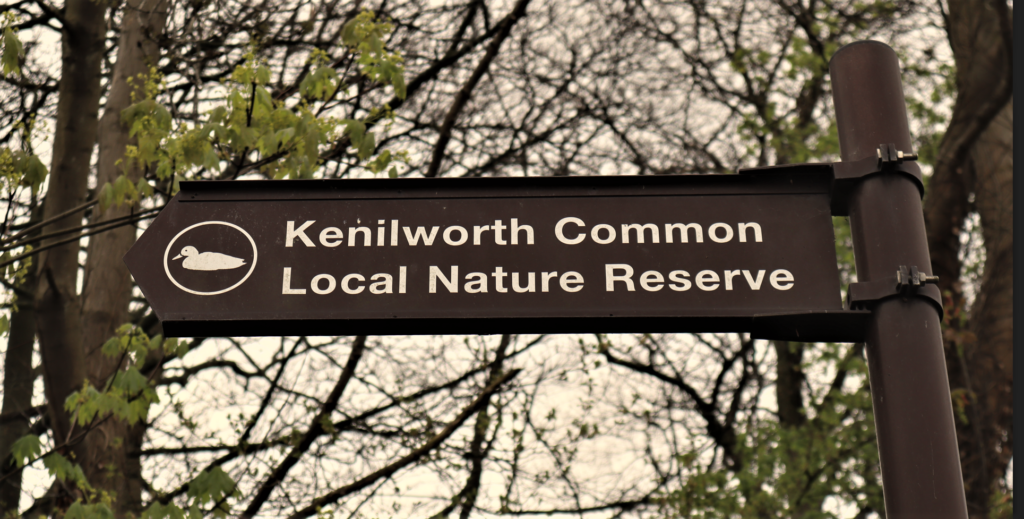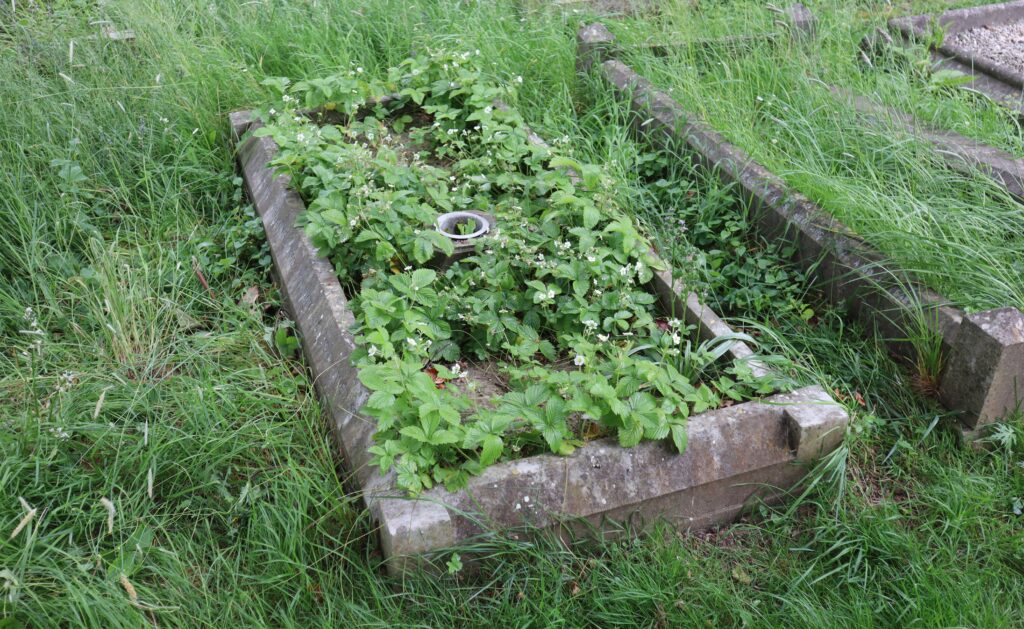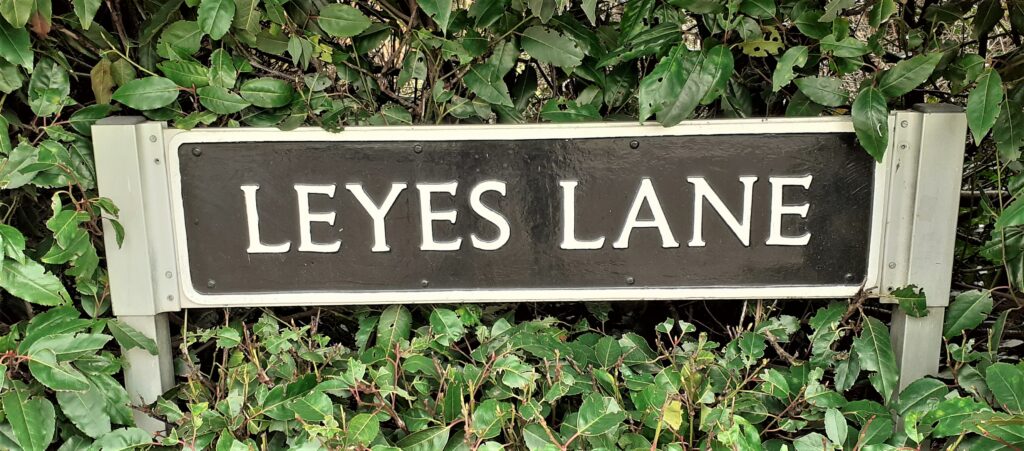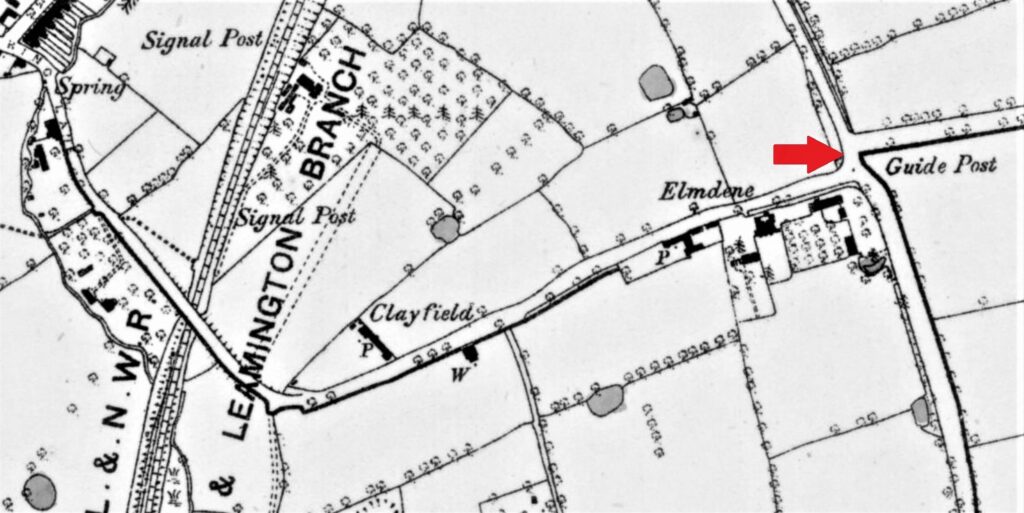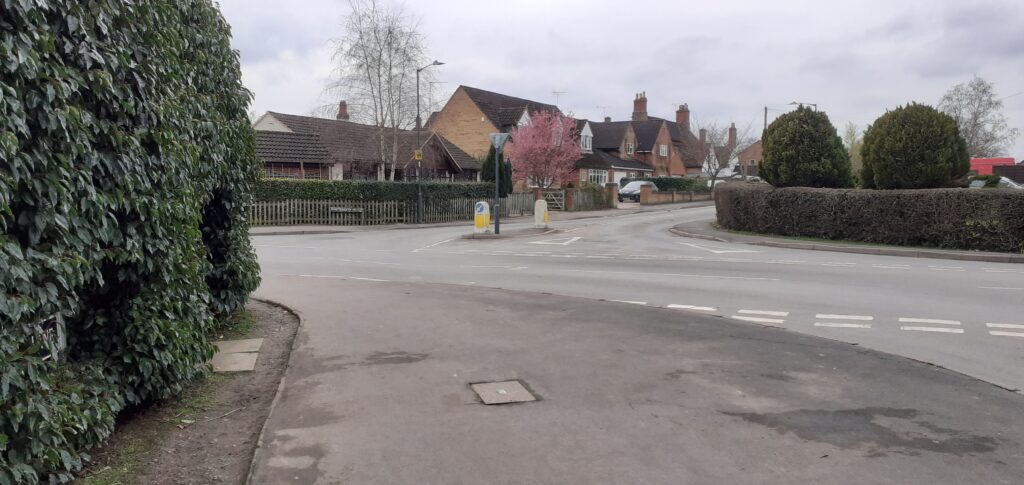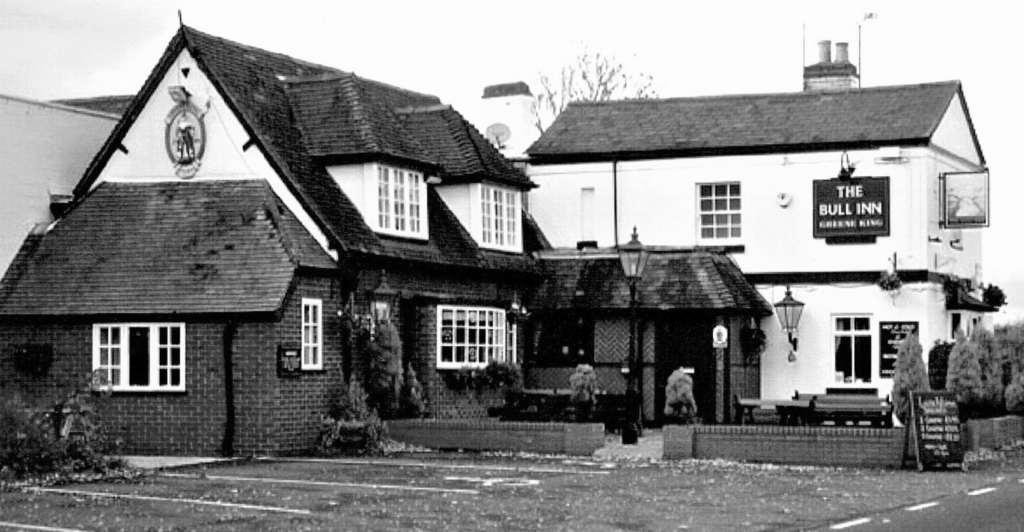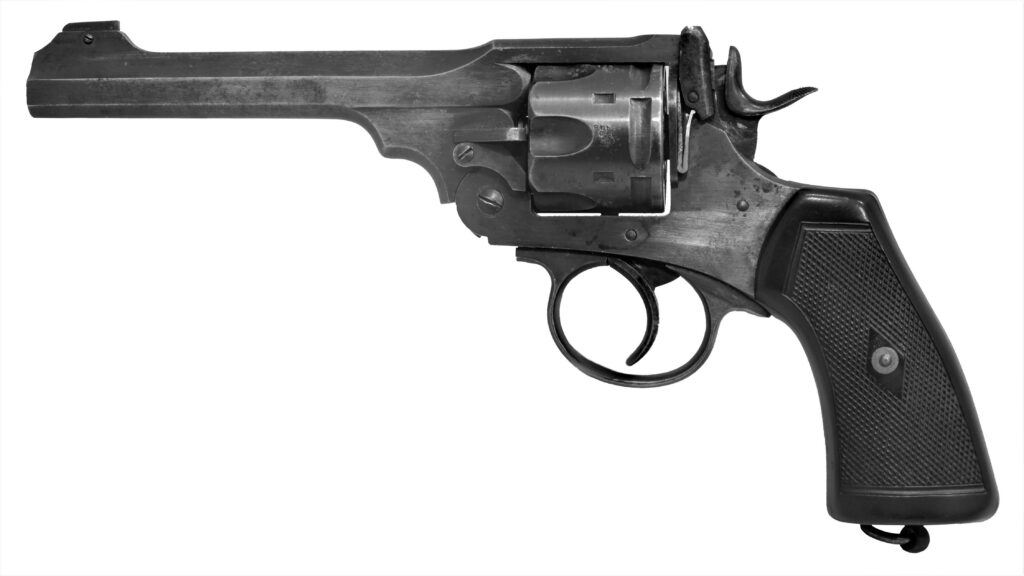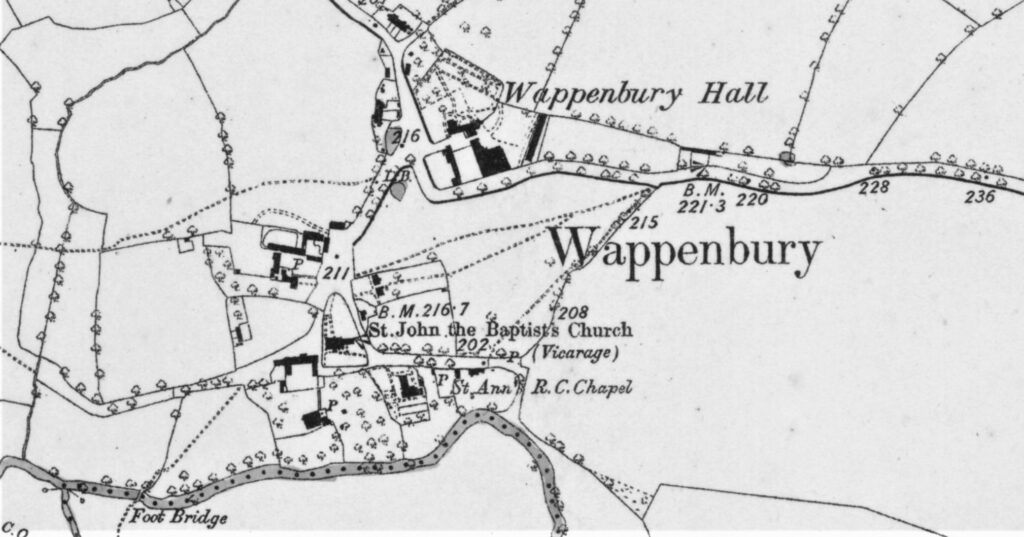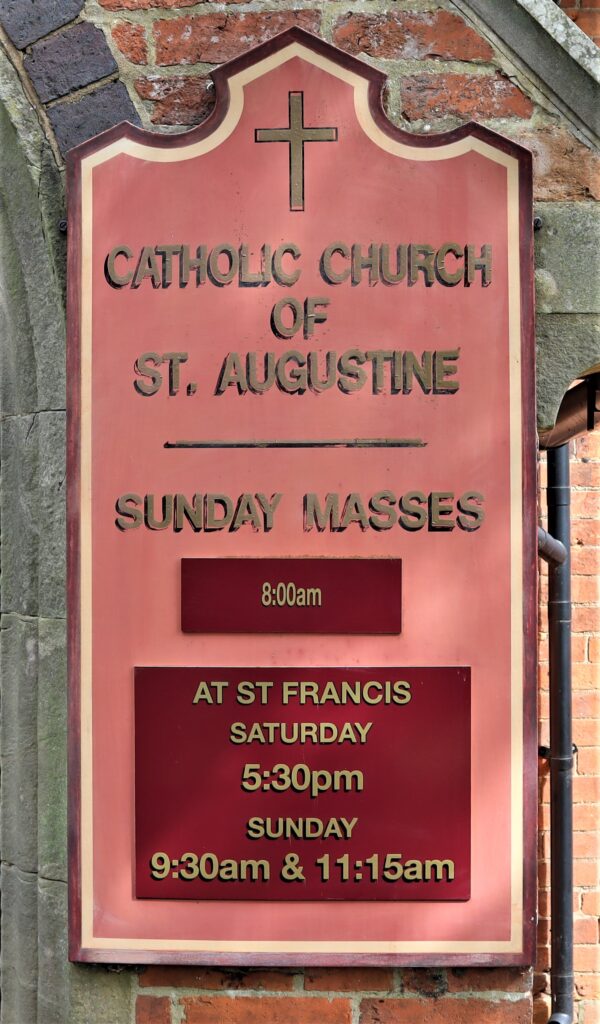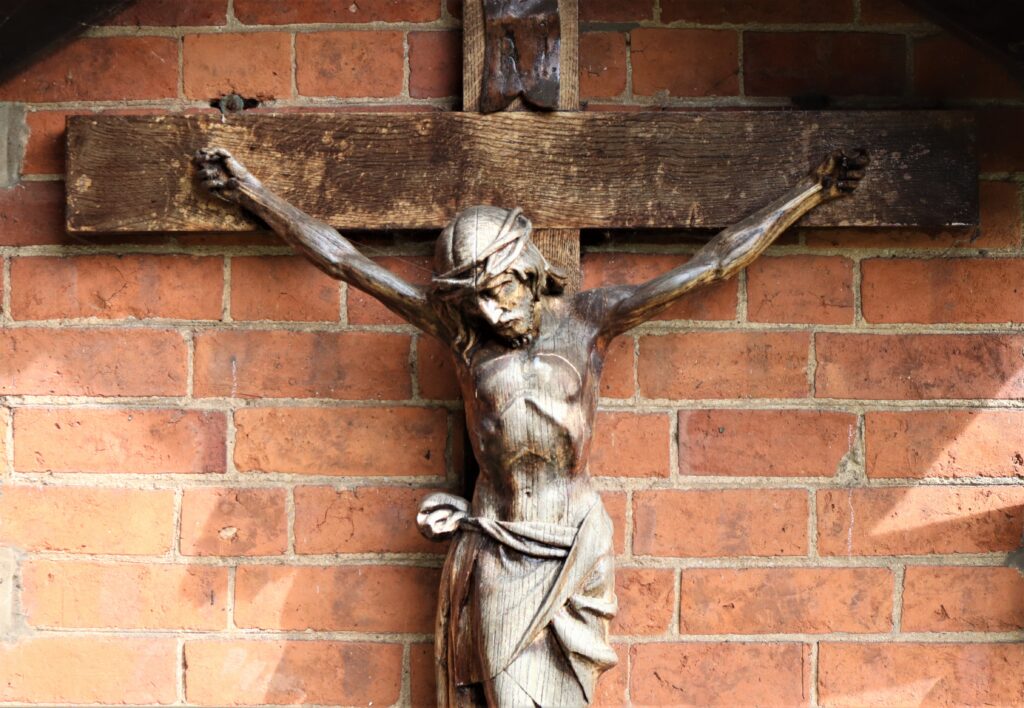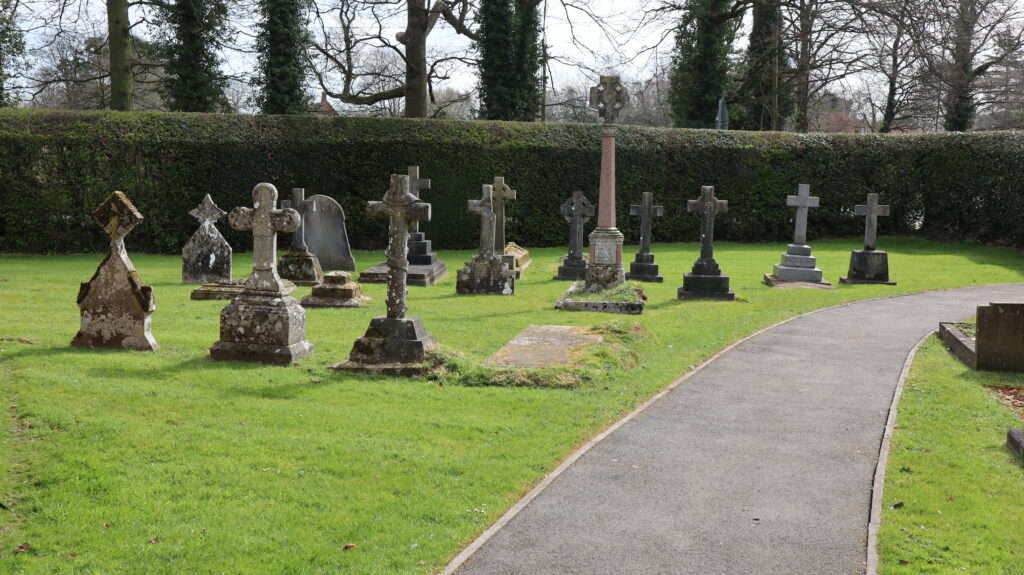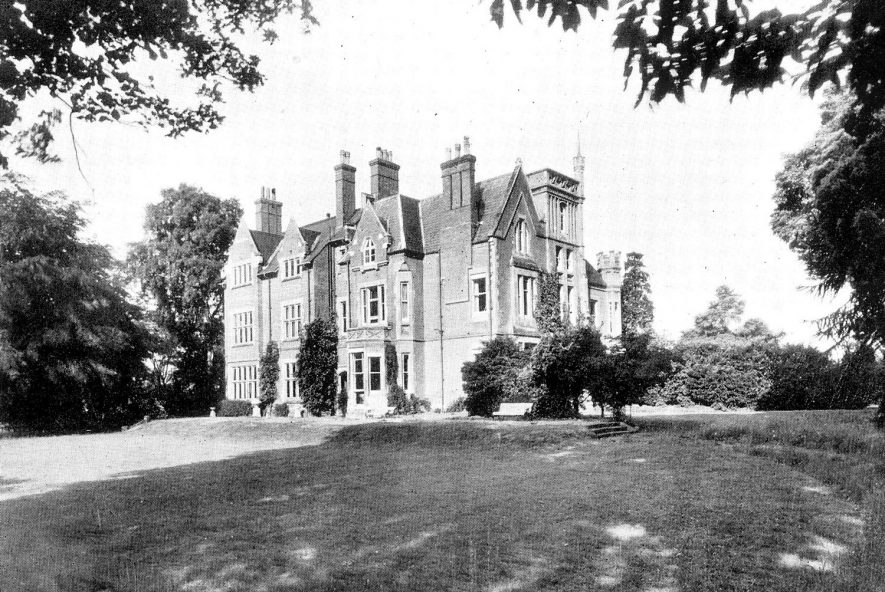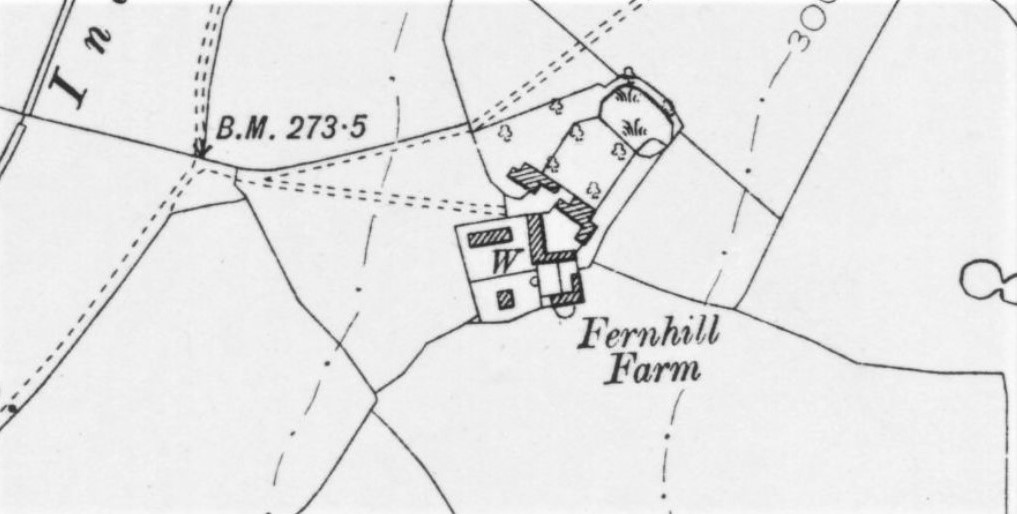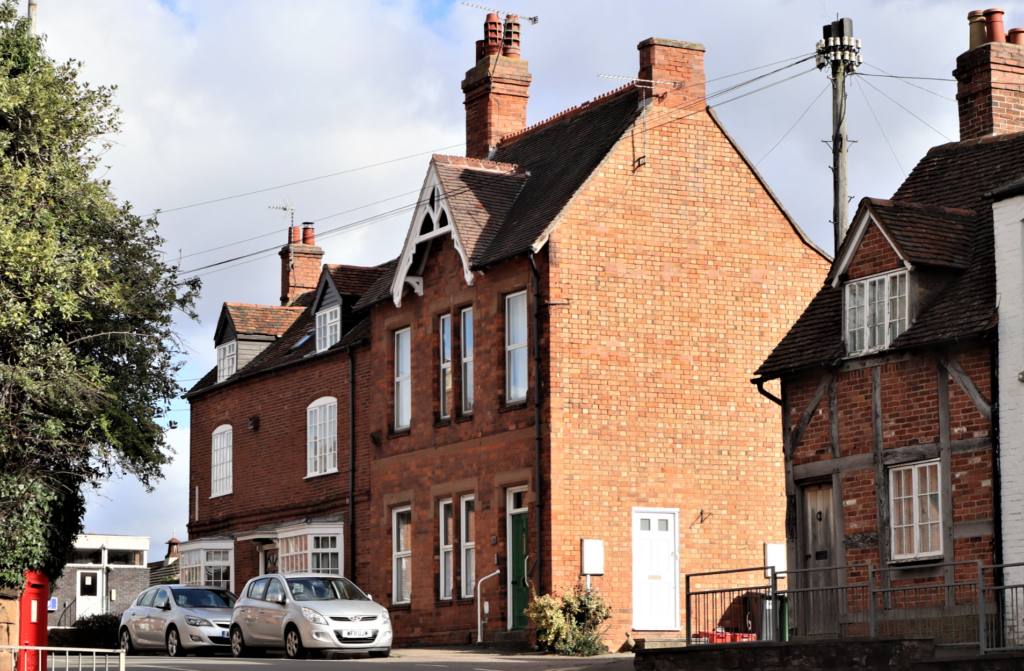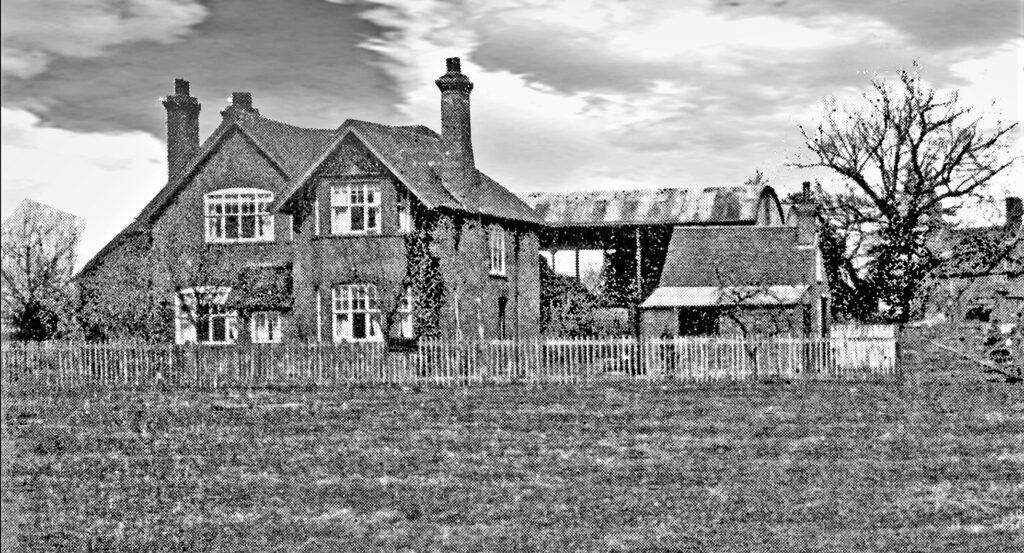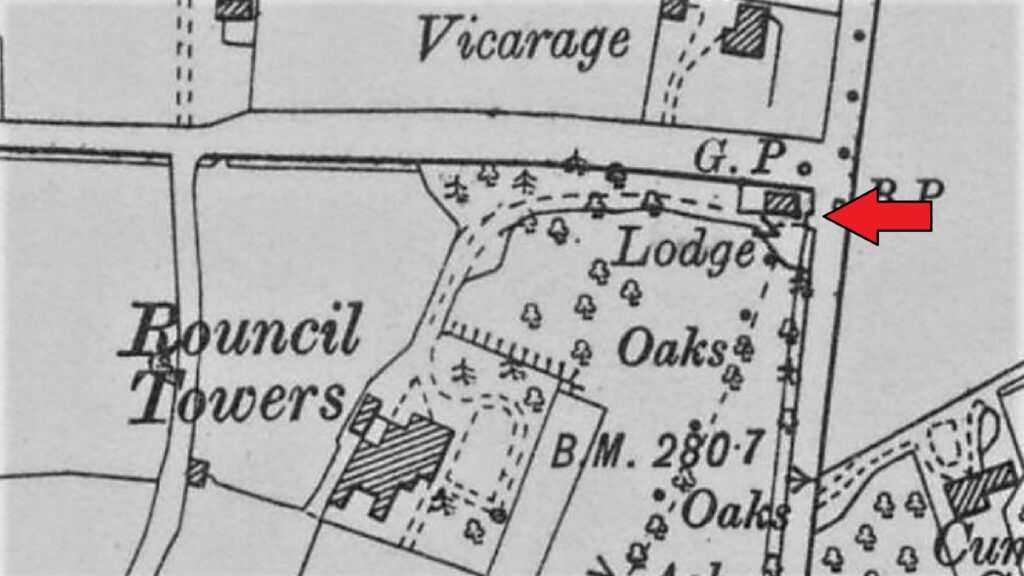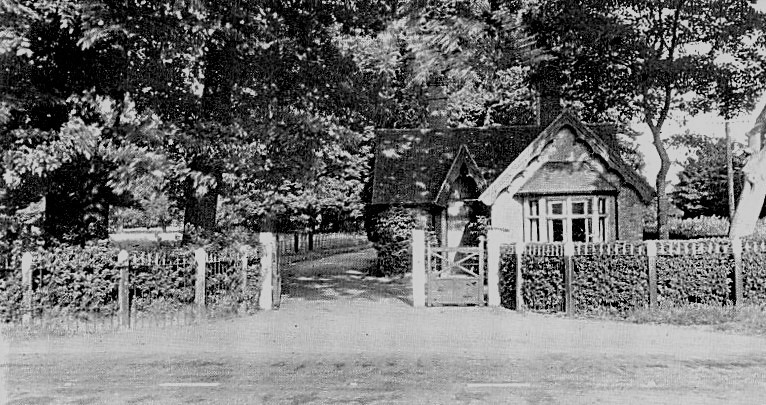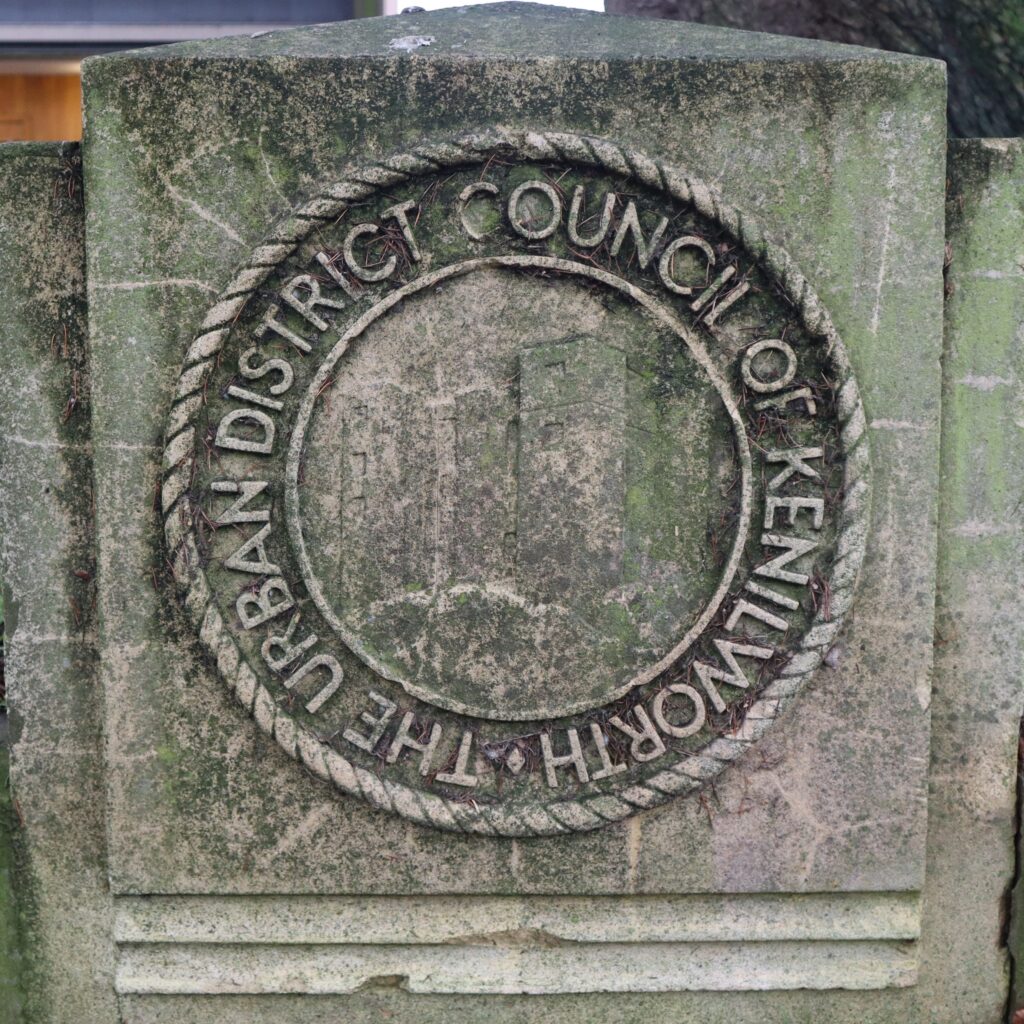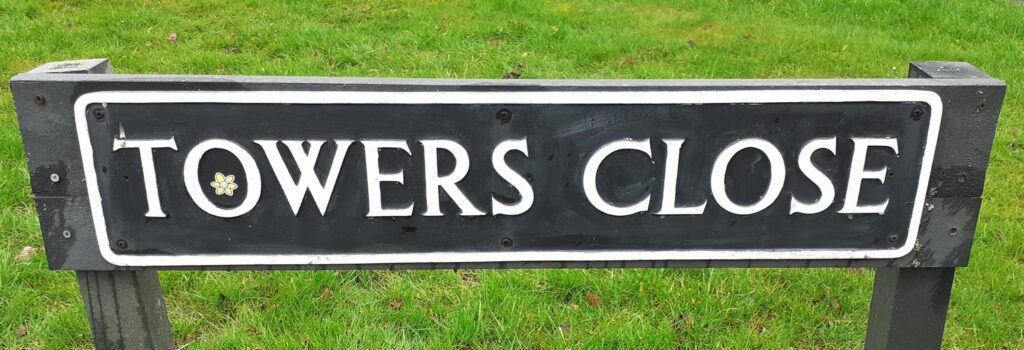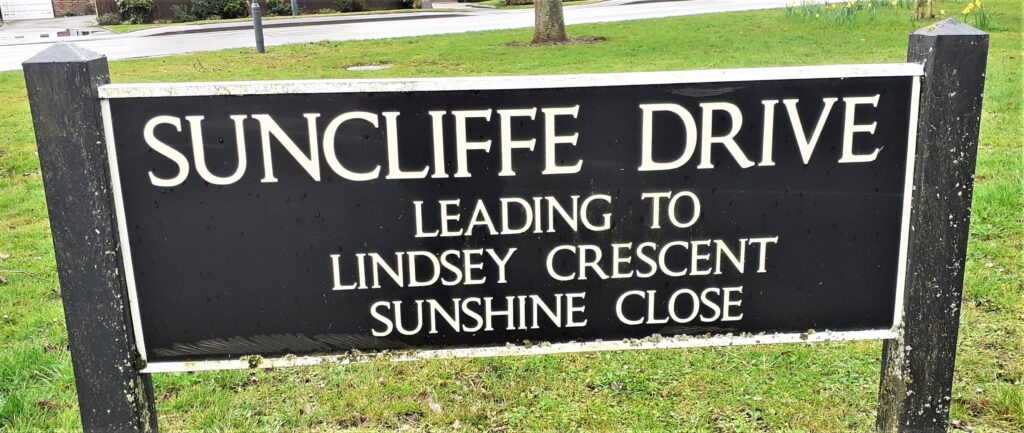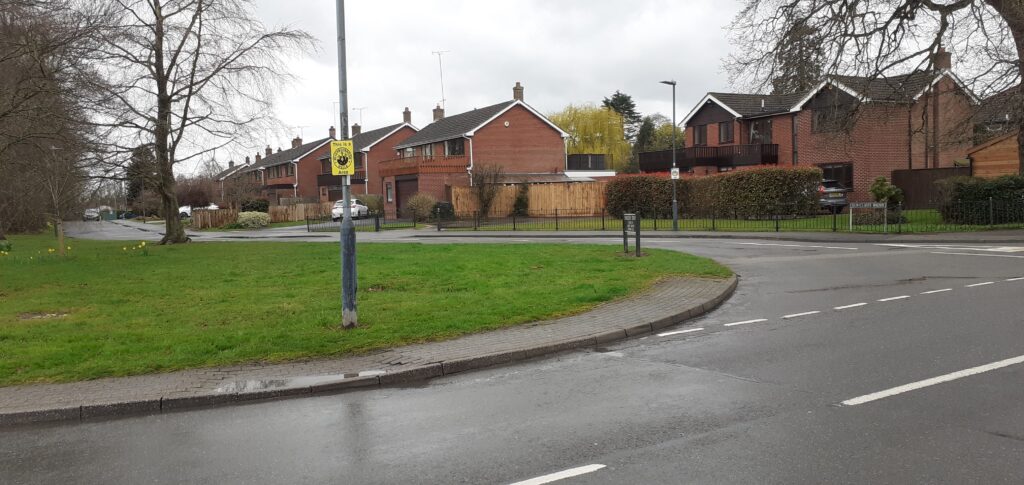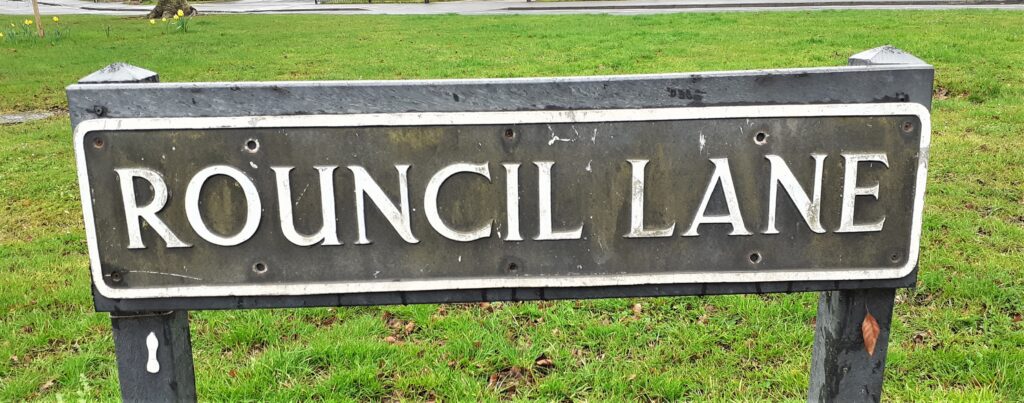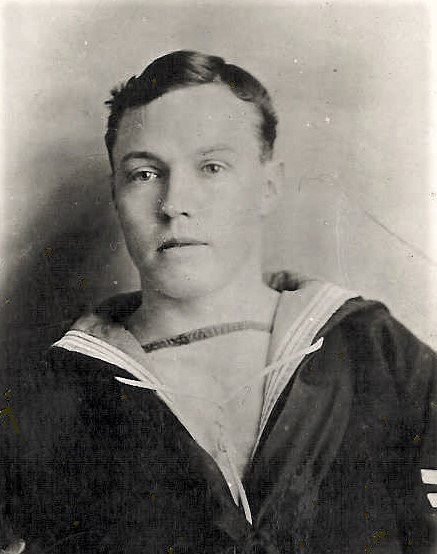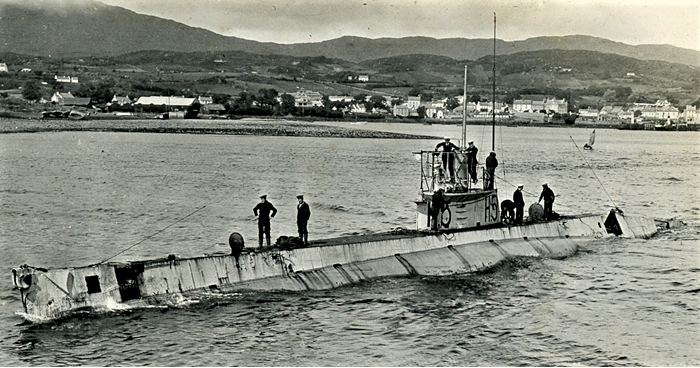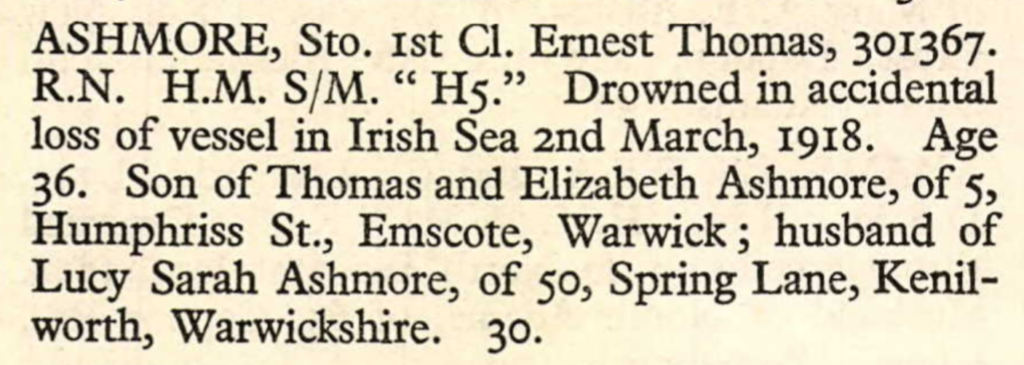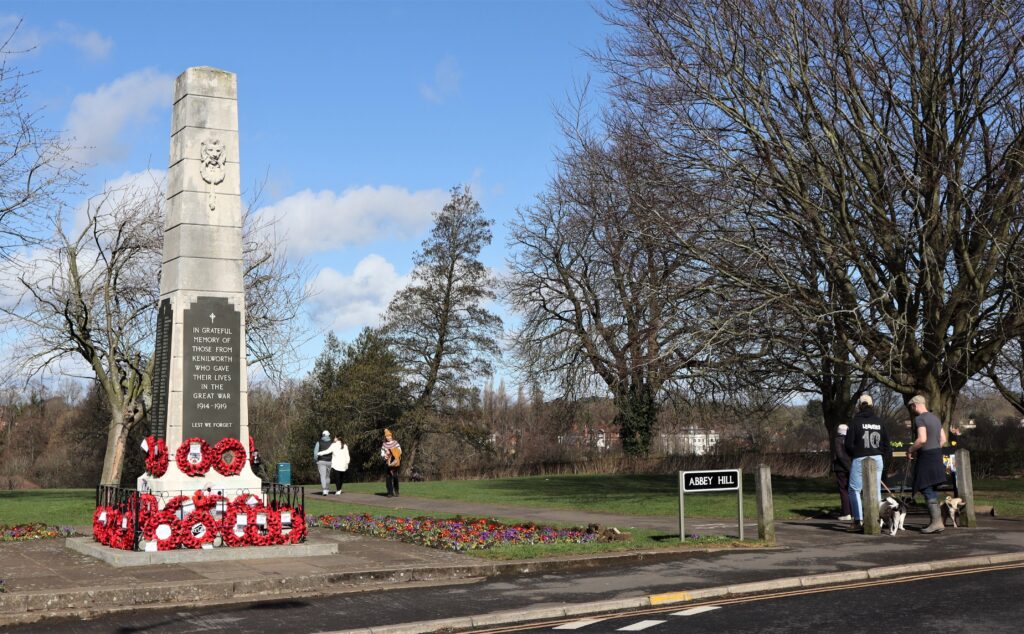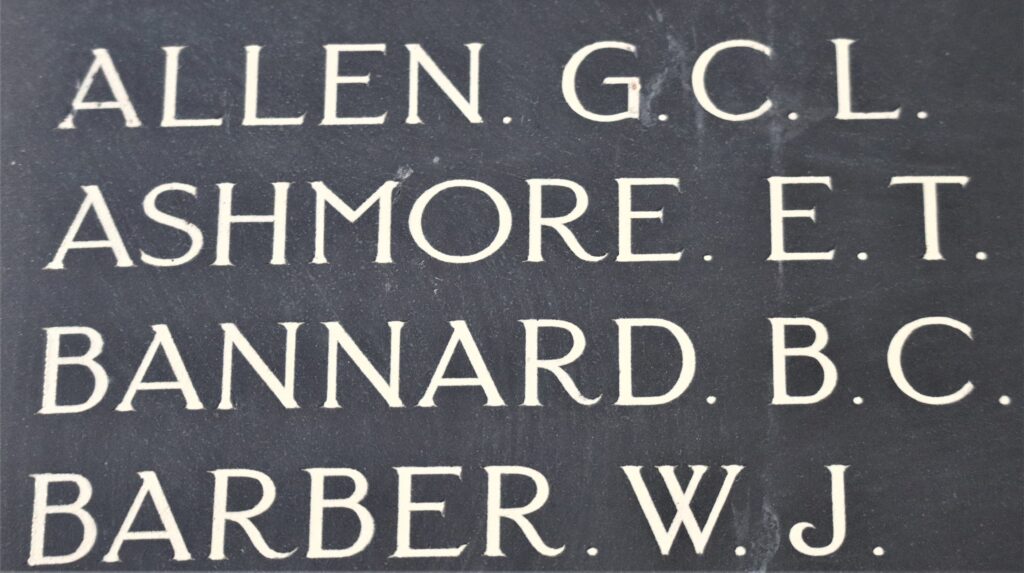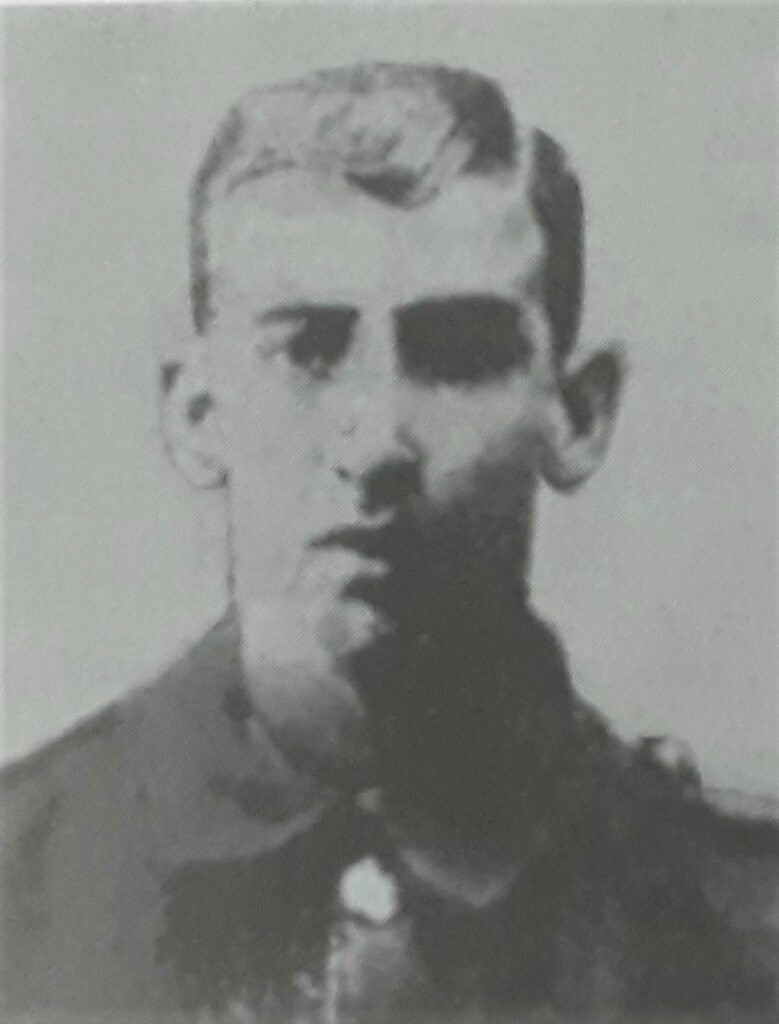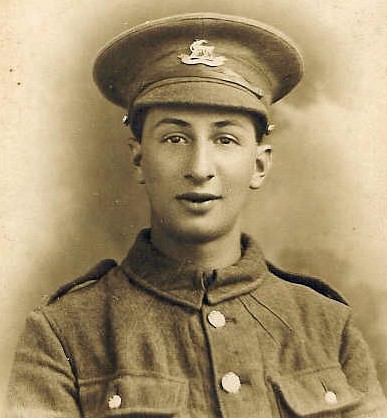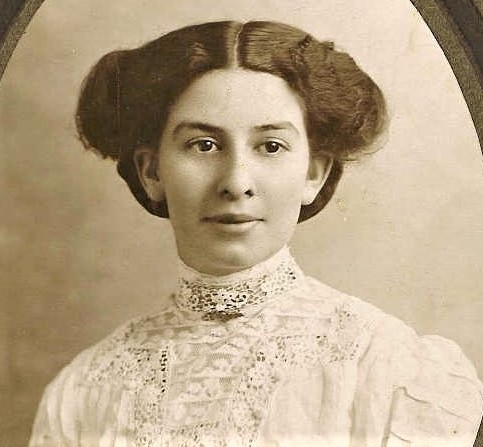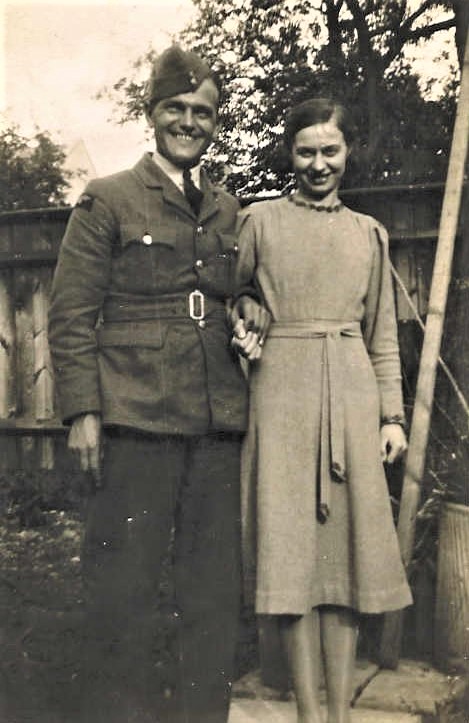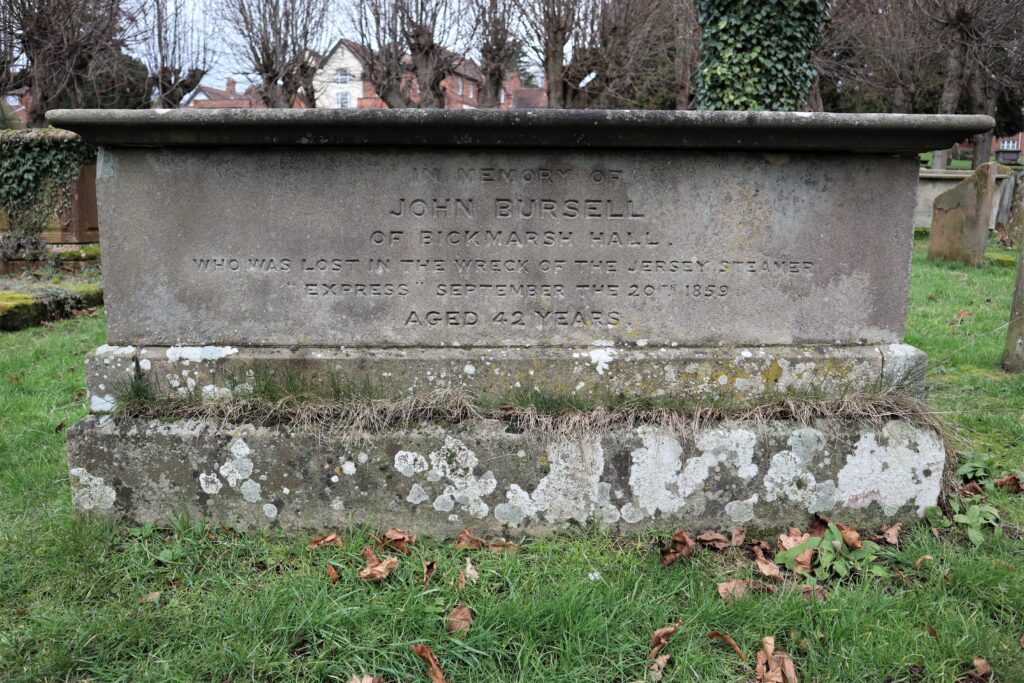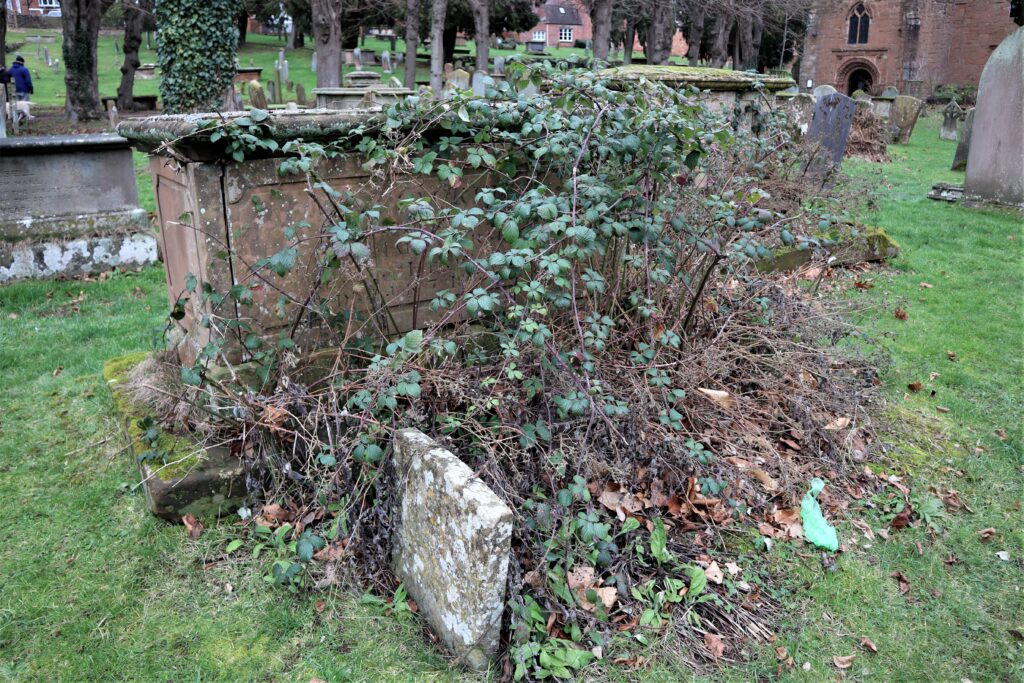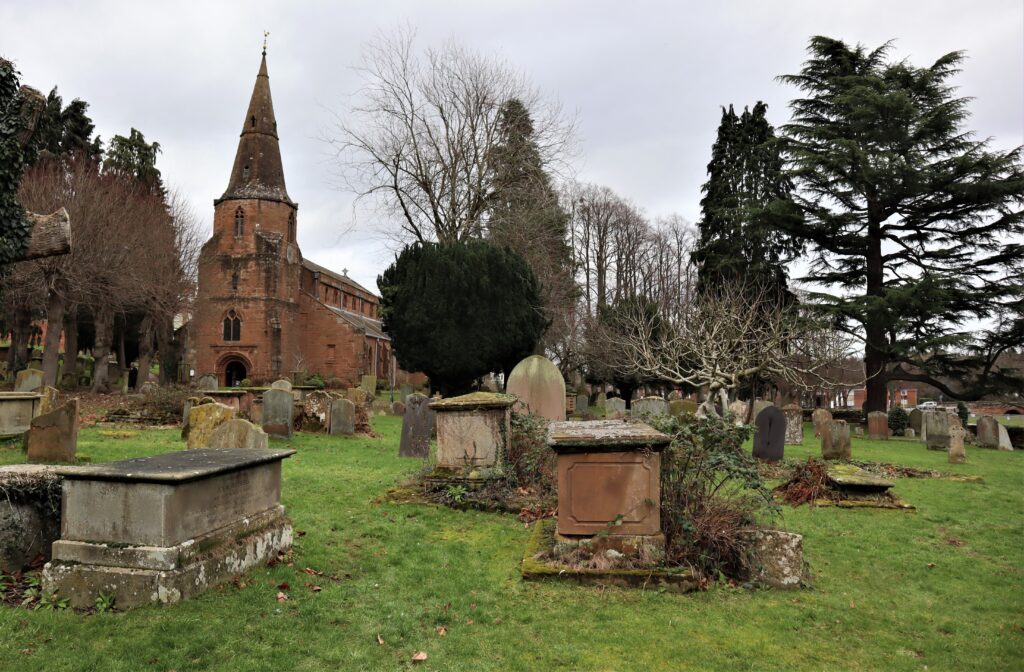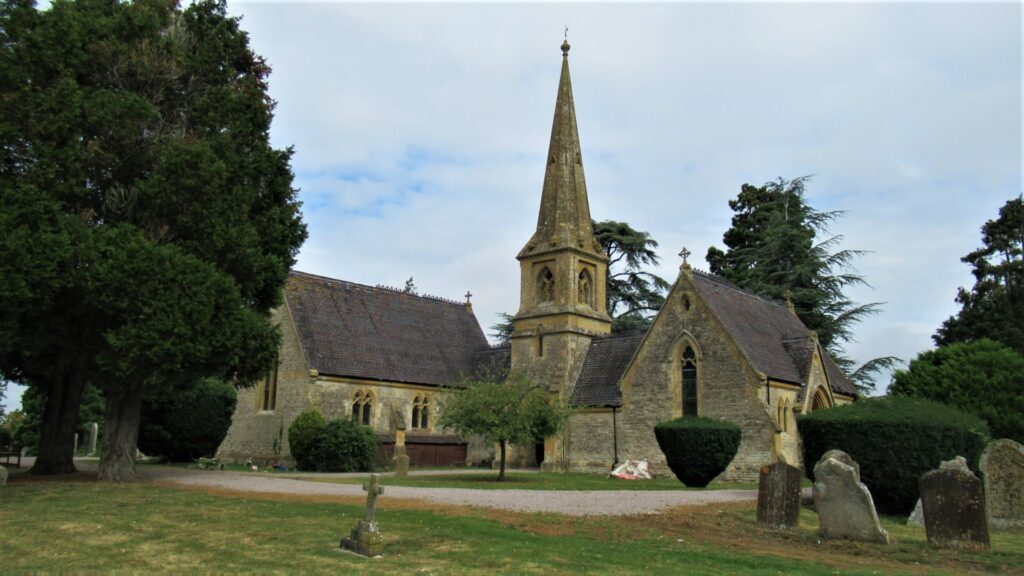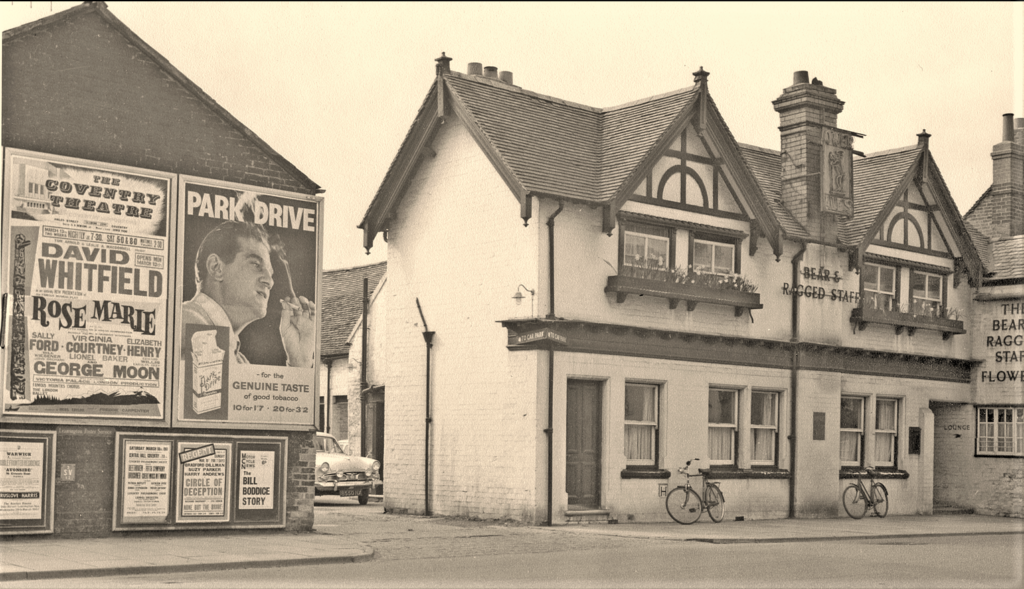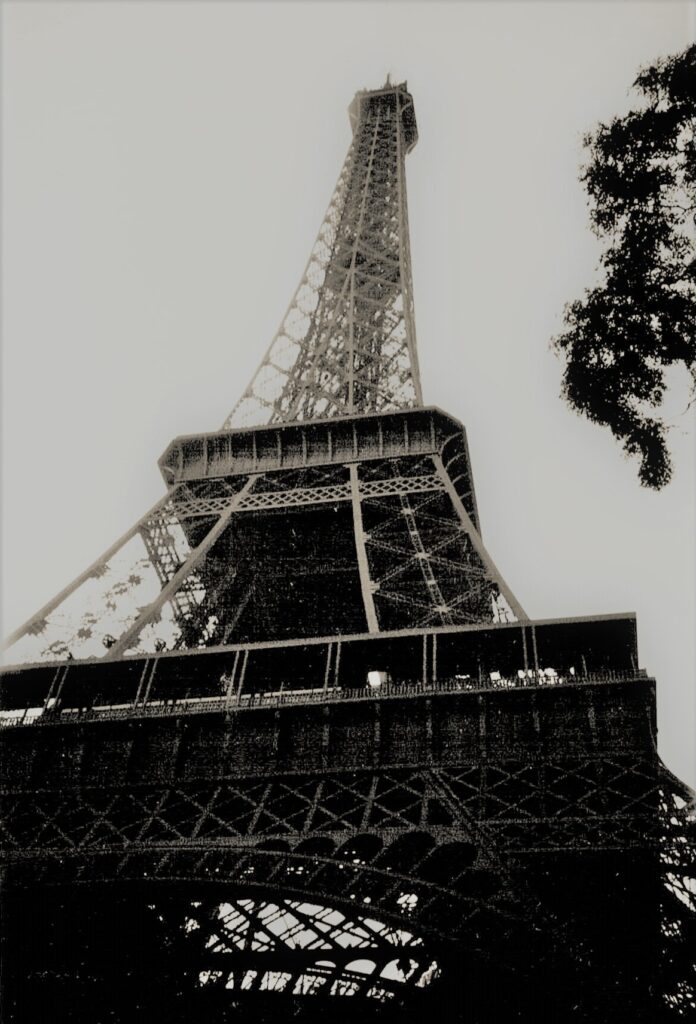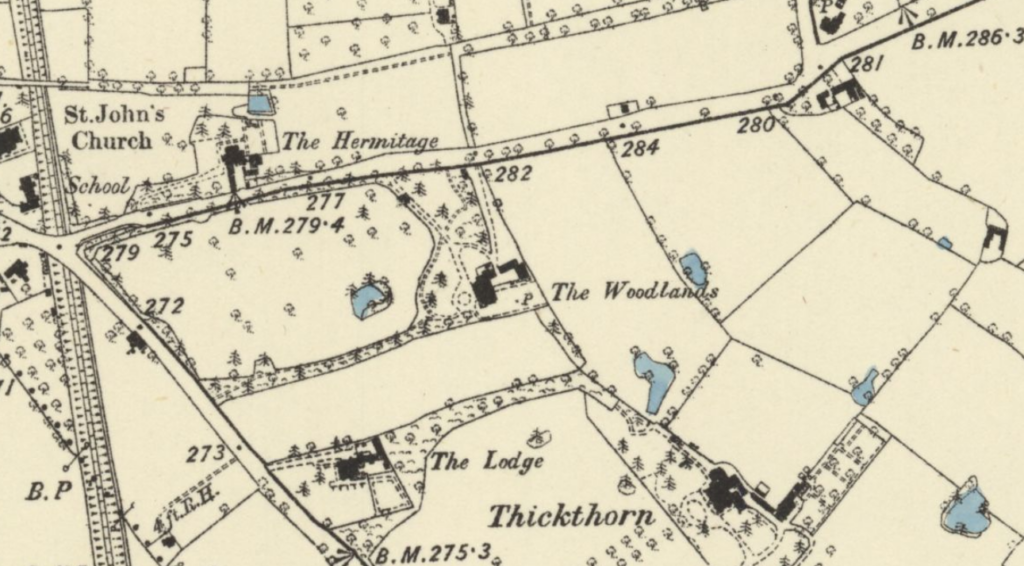
Shocking Discovery
In June 1876, a shocking incident occured at the Woodlands estate, when an infant was found dead in a closet. What made this tragic event even more intriguing, was that the Woodlands was occupied by the former rector of Ashow Church, The Hon. and Rev. Charles Samuel Twistleton.
The alleged perpetrator of the murder was housemaid of six years, Martha Busby, whose recent ‘condition’ and behaviour, had drawn the suspicion of the staff. Busby had left the premises on Tuesday 6th, telling them she had to go home to Culworth in Northamptonshire, to nurse her sick mother. On the afternoon of Friday 9th, the gardener, Stephen Hewens came across some blood in the garden. This led him to look inside the closet, where he discovered the body of a child, which had been strangled using an apron twisted around its neck.
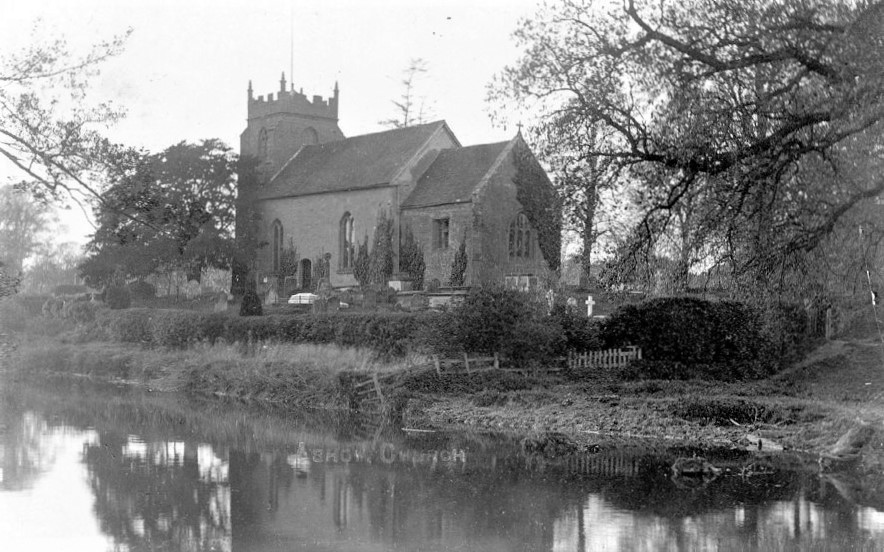
Photo courtesy of Warwickshire County Records Office
ref. 352/10/6/ img 7272
Inquest – 10th June
The inquest took place on Saturday evening, one day after the discovery of the child’s body. Presiding was deputy coroner of Mid-Warwickshire, Dr. Daniel Wynter, the chosen foreman was Mr.Talbot.
Dr. Wynter addressed the jury, and said that the case that they have been called upon was of such a peculiar nature, that he intended to adjourn the court after the evidence of three witnesses was given. These being, the gardener (who found the body), the coachman and sergeant Ingram.
Dr. Wynter said the body had been bought to his surgery where he examining it. The body was then was taken to the Police Headquarters, where the Chief Constable Kinchant, asked that a post-mortem be undertaken. The results of which, will be announced at the adjourned inquest. The case might resolve itself, one of wilful murder, so consequently, a great deal of caution was required.
Housemaid at Woodlands, Martha Busby had left on Tuesday last week, and suspicions had been aroused as to her ‘state’. The case was no doubt one of consealment of birth or murder. In ascertaining the cause of death, several things had to be taken into consideration.
Evidence – Stephen Hewens
Witness, Stephen Hewens, gardener, in the employ of the Mr. Twistleton, stated that yesterday morning he had a conversation with housekeeper, Emma Perkins. She expressed very strong suspicions of the reason why Martha Busby had left. She asked me if I had seen any earth that had been moved around the closet, I told her no, I hadn’t. I then asked her if there was anything wrong? She replied, yes, there is something very wrong. At about 2 o’clock I needed to go to the closet. I looked down inside it and observed the body of a child. I struck a match and could see the body was on its side with the right arm extended. I went straight into the house and informed the female servants. I came back out and met the coachman, John Allen. I told him what I had seen so he went to the closet and pulled the body out with a pair of tongs. I went back into the house and got a key and locked the closet door. I saw some blood in the garden about six or seven yards from the closet, there appeared to have been a large quantity of blood but the rain had partly washed it away. The closet is surrounded by shrubs and it’s in a quite part of the garden. I never saw Busby anywhere near it.
Evidence – John Allen
Witness, John Allen, the coachman in the employ of Mr. Twistleton, told the court that when he returned from dinner at a little after 2 o’clock he met the gardener near the stable yard. He told me that a serious job had happened, he was very quiet at first and would not tell me what had happened but eventually told me he had found a body in the closet. I said I would go and get it out. I went into the kitchen and got some tongs and pulled the body out onto the carpet in the closet. I never noticed Martha Busby near the shrubs, the place is a private area.
Police Evidence
Witness, Sergeant Ingram, told the inquest that from the information he received, he went to the Woodlands, and in a closet he found the body of a female child. He took possesion of the body and examined it, finding bruises on the thighs and face. A piece of something like tape, which later was found to be the hem of an apron, was tied tightly around its neck, which had lacerated the skin. He also saw the mouth was stuffed with leaves and dirt. He then took the body to Dr. Wynter, and then afterwards to the police. This morning, in the company of Superintentent Lapworth, he made an examination of the area surrounding the closet, and found traces of blood in a corner on some withered leaves, and on some branches of ivy, which had been torn from the wall about a dozen yards away from that spot. He searched a chest of drawers in the room occupied by Martha Busby, and found a print dress and other articules wrapped up in it, it was covered in blood. He produced this evidence before the court. Her fellow servants, identified the dress as belonging to Martha Busby, which was worn by her on Monday.
At this point the deputy coroner adjourned the inquest.
Adjourned Inquest – Tuesday 13th June
The deputy coroner, opened the adjourned inquest by saying; “Before we proceed to take any steps in this matter, I wish to read to you a paragraph which I think is most improper and un-fair. It was reported in the Birmingham Daily Post on Monday”.
It reads – “Child Murder at Kenilworth- A shocking case of child murder has occured at Kenilworth. A domestic servant strangled a child to which she had given birth and secreted the body into an outhouse. The woman left her situation the following day for her home at Culworth, a village near Northampton, where she was apprehended by Superintendent Lapworth of Warwick police. She was removed to Kenilworth”.
Dr. Wynter said that, as far as this inquiry is concerned, this is not a court in which there is a charge against anybody at all. There is no one before you as a prisioner, and all that you are here for is to inquire into the cause of the death of the child. The article alludes to a certain person who has been taken into custody, with whom you, at present, have nothing to do with. It is a statement which is very wrong and improper to be in public print. I hope this will never happen again in the future.
Solicitor, Mr. Homer of Coventry observed the inquest on behalf of Martha Busby.
The evidence from the previous inquest was read out and additional evidence was given.
Post-Mortem Results
The post-mortem was carried out by Dr. Wynter, assisted by Dr. Clarke. The child had a ligature around its neck, and the mouth had been stuffed full of leaves as far as the windpipe. The umbilical cord had not been tied as it should have been, it was torn. Abrasions on the mouth indicated that force had been used. The evidence shows that the child had breathed, and there was extravasation of blood on the brain. If the child had not breathed, the bursting of the blood vessels under the scalp, could not have taken place.
Witness – Mary Heden
Mary Ann Heden, cook, in the employ of Mr. Twistleton, stated she last saw Busby wearing the print dress on Saturday week. She confirmed that Busby left on 5th June saying she was going home to Culworth, to care for her dying mother. Busby had lived at Woodlands for more that six years and was considered a respectable and hard working person. On 4th June Busby complained to her about feeling unwell. Before she left, witness said to her; “Martha I hope you will not come back again until you are confined”. Busby replied “What?”. Witness repeated her statement. Witness then told housemaid Emma Perkins what she had said to Busby, and later on entering the kitchen, Perkins said to her; “Now Martha, you are openly accused of what I have accused you of before, have I not accused you before?”. Busby replied, “yes, you have”. Witness then told Busby that she was near her ‘confinement’. Busby replied, “I just ain’t, I will go home and get Dr. Douglas to come to Mr. Twistleton and let you see I ain’t”. Busby continued; “I have got diarroea, it was the gooseberry pie that you gave me yesterday”. Witness said that Busby looked very pale, and sat in the kitchen for two hours and often complained of neulalgia. She was not right in her mind, and was so ‘flighty’, also doing strange things and seemed bewildered.
The deputy-coroner asked Mr. Homer if he wanted his client to be present in the room. He replied saying that he did not want her here, due to her bad health. The inquest was adjourned until Monday, and Superintendent Lapworth said that Busby would be detained in custody.
The Hon. and Rev. Charles Samuel Twistleton (1806-1890)
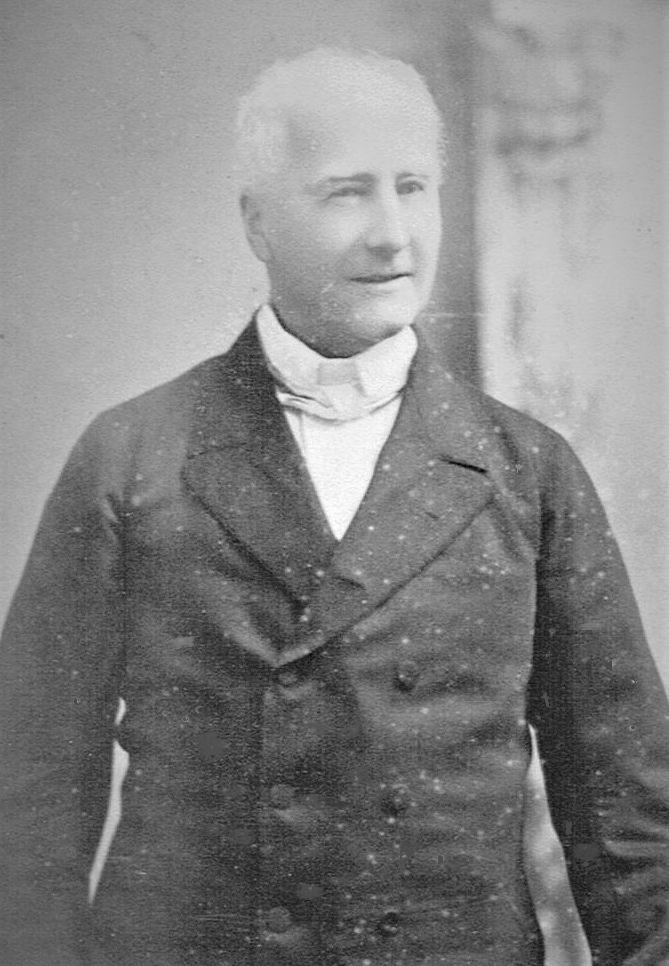
Charles Samuel Twistleton (pictured) was born in British administered Ceylon 1 (now Sri-Lanka) to parents; The Hon. Thomas James Twistleton (1770-1824) and Anna Ashe (1770-1847), who was the daughter of Benjamin Ashe of the East India Company.
During his time in Ceylon, Charles’s father became the Archdeacon of Columbo from 1815 until his death in 1824.
The family eventually returned to England and Charles came to Kenilworth and moved into the Woodlands. With family connections to Lord Leigh, Charles became the rector of Ashow in 1831. 2
Busby Sent to the Assizes
Martha Busby was sent for trial on the 2nd August 3 at Warwick Assizes on charges of;
‘Having at Kenilworth on the 5th June 1876 been then and there delivered of a child, feloniously, wilfully, of her malice afore-thought, killed and murdered the said child”
There were two prosecuting lawyers: Mr. Coleman and Mr. Griffith. But only one for the defence, Mr. Buszard.
All the witnesses from the previous inquests were called upon to give evidence. It must be understood that with all the evidence provided and the gravity of the charges, it didn’t look good for Busby. Conviction of murder was a strong possibility. But as the trial progressed, things began to change.
Witness – Dr. Bourne
Thomas Skippington Bourne, surgeon of Kenilworth, told the court that he had visited the prisioner on February 24th, at the Woodlands. She was complaining of neuralgia, and also suffering from disorder of the digestive organs. He told the court that he had only examined her medically not physically and came to the conclusion that her symptoms were due to either pregnancy or a digestive disorder.
He said he saw the body of a newly-born child at the house of Mr. Twistleton on the 9th June. The mouth was crammed full of leaves. All around the mouth there was great discolouration, arising from extravasation of blood. There was a ligature tied very tightly around the neck but there was no discolourastion above or below the ligature. Witness was cross-examined by Mr. Buszard, Dr. Bourne said that in his opinion, the child was dead before the ligature was tied. So it could not have been the cause of death.
Witness – Dr. Wynter
Dr. Daniel Wynter, who conducted the post-mortem, with the assistance of Dr. Clarke, came to a different conclusion. He said, the lungs were a bright pink colour and floated in water. There was extreme congestion of the venus system of the brain, that would show, in his opinion, that there had been circulation for a few minutes. He was certainly of the opinion the child had breathed. He also believed death would have resulted from stuffing the mouth with leaves or from the ligature, but he was not in a position to say if the child had a seperate existence. He did not agree with Mr. Bourne, that the ligaure had nothing to do with the death. The flesh along the line of the ligature was livid. He said that the child had lived for a minute or a minute and a half.
Disagreement of Experts
With the medical experts being unable to agree on the cause of death, or indeed, if the infant had ever ‘lived’, the judge said that he would not proceed with murder or man-slaughter charges. Prosecution lawyer, Mr. Coleman recommended the prisioner be shown mercy, due to her previous good character, up until this affair.
The prisoner, on the advise of her counsel, consented to the minor count of ‘consealment of birth’, which his Lordship directed the jury to return.
The Sentence
The Judge in passing sentence, said technically the prisioner had escaped the charge of murder, but he could not think this was a case he could view with leniency. It was a very bad case – as bad a case he had ever tried. When the prisioner tied the string round the neck of her child, and crammed its mouth full of leaves, it was with the object of preventing it coming to maturity. Whether the act was technically murder or not, was immaterial. The sentence he was bound to pass upon her was that she be imprisioned, and kept to hard labour for 20 calender months.
The trial lasted for three and a half hours.
Twistleton’s Second Marriage
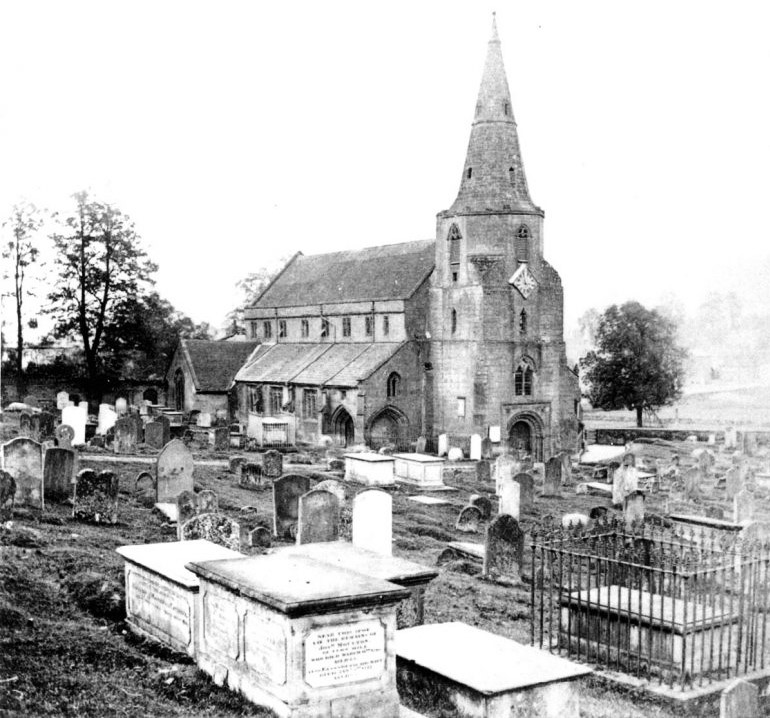
We have to remember that these events took place at Woodlands during the period between the death of Mr. Twistleton’s wife, Caroline in 1873, and his second marriage to Irish born Dorothea Touchet, in 1878.
When he married Dorothea she was just 26 years-old and he was 71. They were married on 24th January by licence at St Nicholas Church 4, not at Ashow where he had been rector for 34 years. On the marriage register at St Nicholas, their ages were recorded as being of ‘Full Age’. 5
Photo courtesy of the Warwickshire County Records Office Ref. PH 652/1/111 Img 7091
The Woodlands and The Will
In its prime, the Woodlands employed numerous servants, including a butler, lady’s maid, housekeeper, housemaid, coachman, gardener and a groom. 6
Charles Twistleton died on the 13th September 1890, aged 84, 7 and was buried with his first wife Caroline at Ashow. In his Will, he left a personal estate of over £77,000, equivalent to more than £6 million today. 8 Dorothea continued to live at the Woodlands for a period of time, but eventually left Kenilworth. She died in 1933, at Chippenham, aged 82. It appears she never re-married. 9
Busby Moves On
After her release from Warwick Gaol, Martha decided to make a fresh start and moved away from the midlands and settled in Devon. In the 1881 census, she is residing in the Tormoham district of Torquay, and is recorded as being a domestic servant for a school mistress. The address where she was living and working was ironically called ‘Woodland Grove’. A name that must have sent a shiver down her spine.
By 1891, things were looking up for her, as she was now married to a George Endacott, who was a stonemason by trade, the family were living in Paignton. There were three children with the surname of Endacott on the census, aged between 10 and 15, but none of these were Martha’s children. They were from her husband’s previous marriage to Mary Grace, who had died in 1882, aged just 34. 10
Martha died in the first quarter of 1916, at Totnes, Paignton, aged 66. 11 By this time she was a widow.
references/sources
- Various census records. ↩︎
- Ashow Church, List of Rectors, 1298-present. ↩︎
- UK, Calender of Prisioners, 1868-1929. ↩︎
- Church of England, Marriages and Banns 1754-1900. ↩︎
- Warwickshire, England, Church of England Marriage and Banns, 1754-1910, page 147. ↩︎
- Various cencus records ↩︎
- Warwickshire, England, Church of England Burial Records, 1813-1910. ↩︎
- Currency Converter – National Archives. ↩︎
- England & Wales, Civil Registration, Death Index, 1916-2007. ↩︎
- England & Wales, Civil Registration Death Index, 1837-1915. ↩︎
- England and Wales, Civil Registration Death Index, 1916-2007. ↩︎


